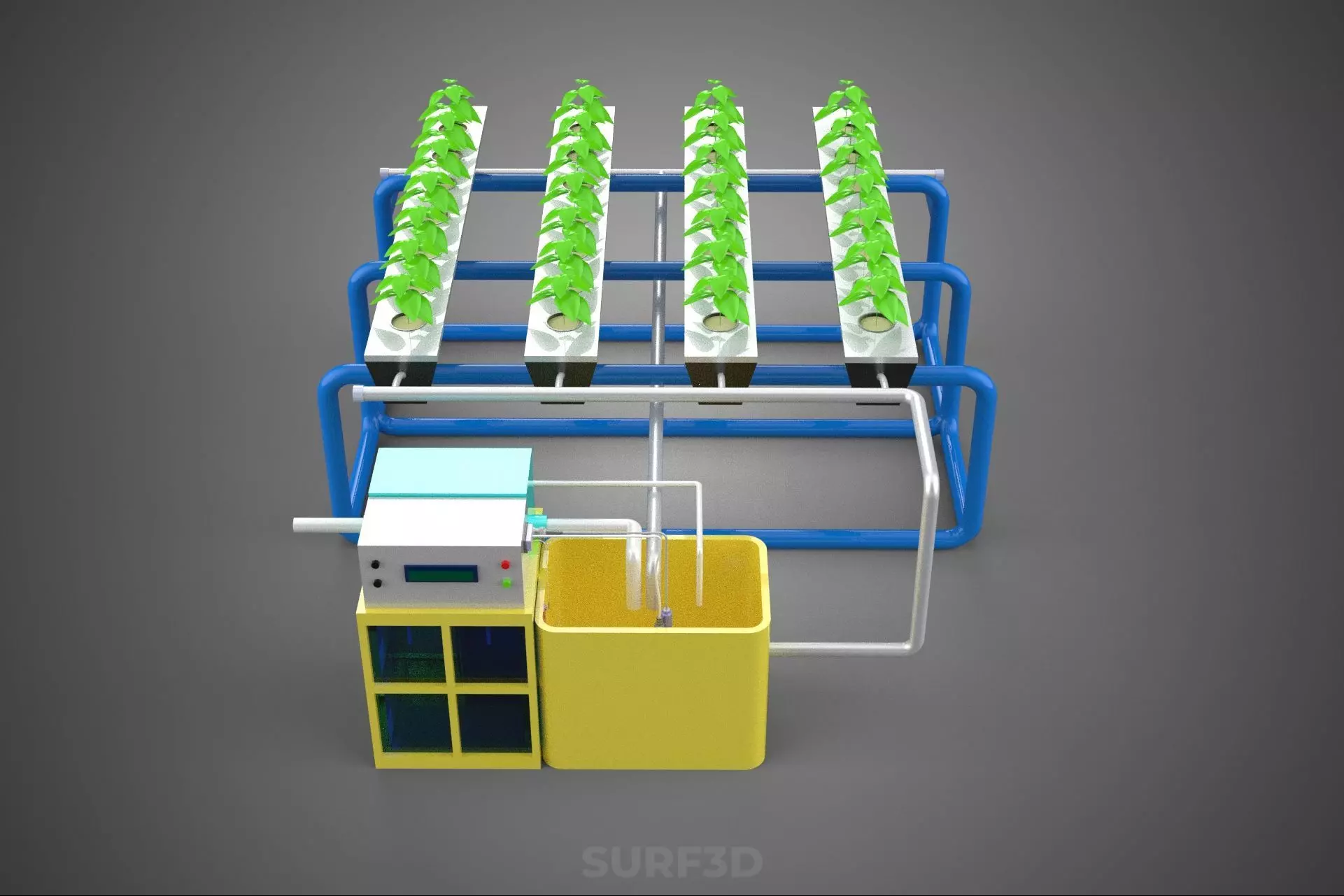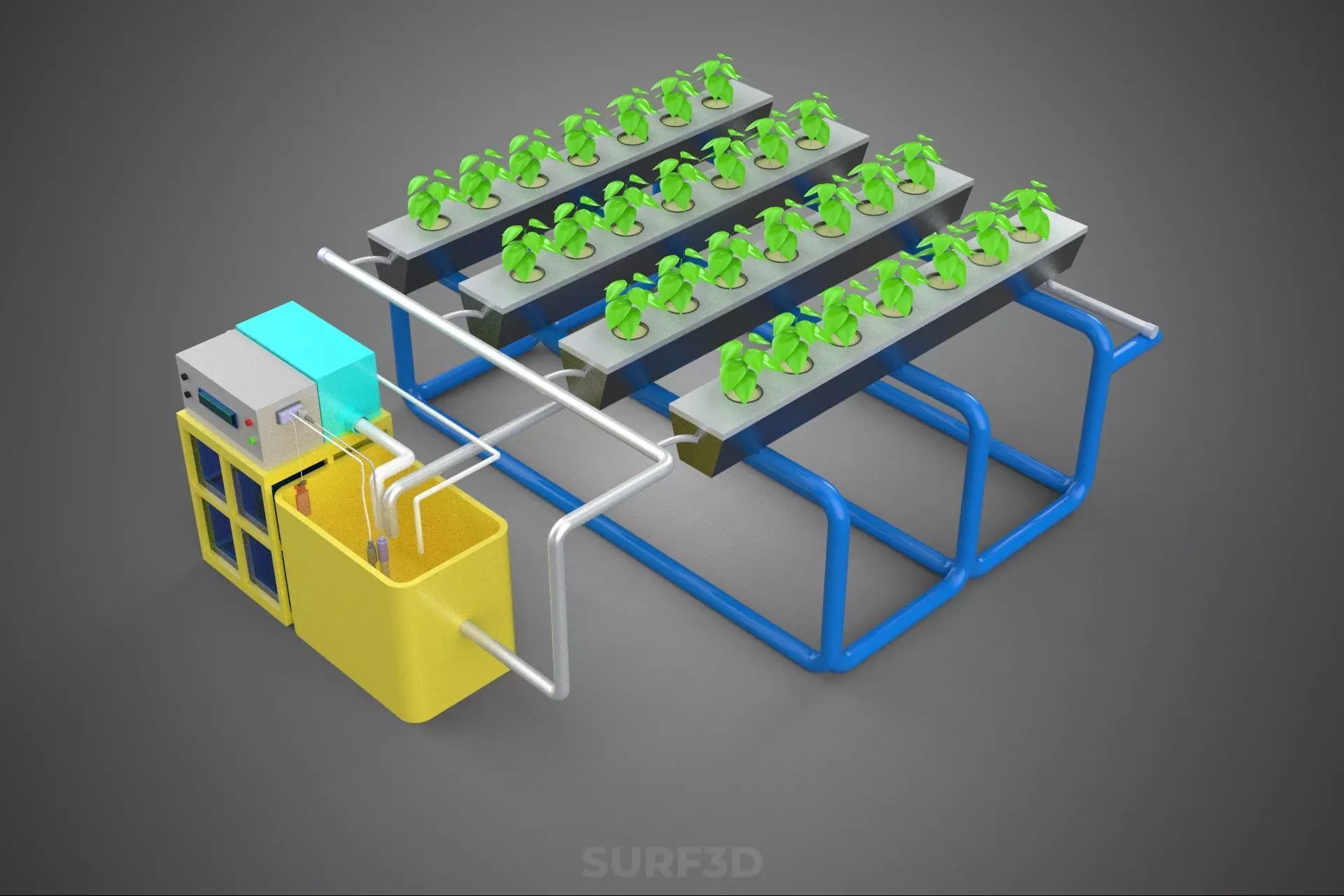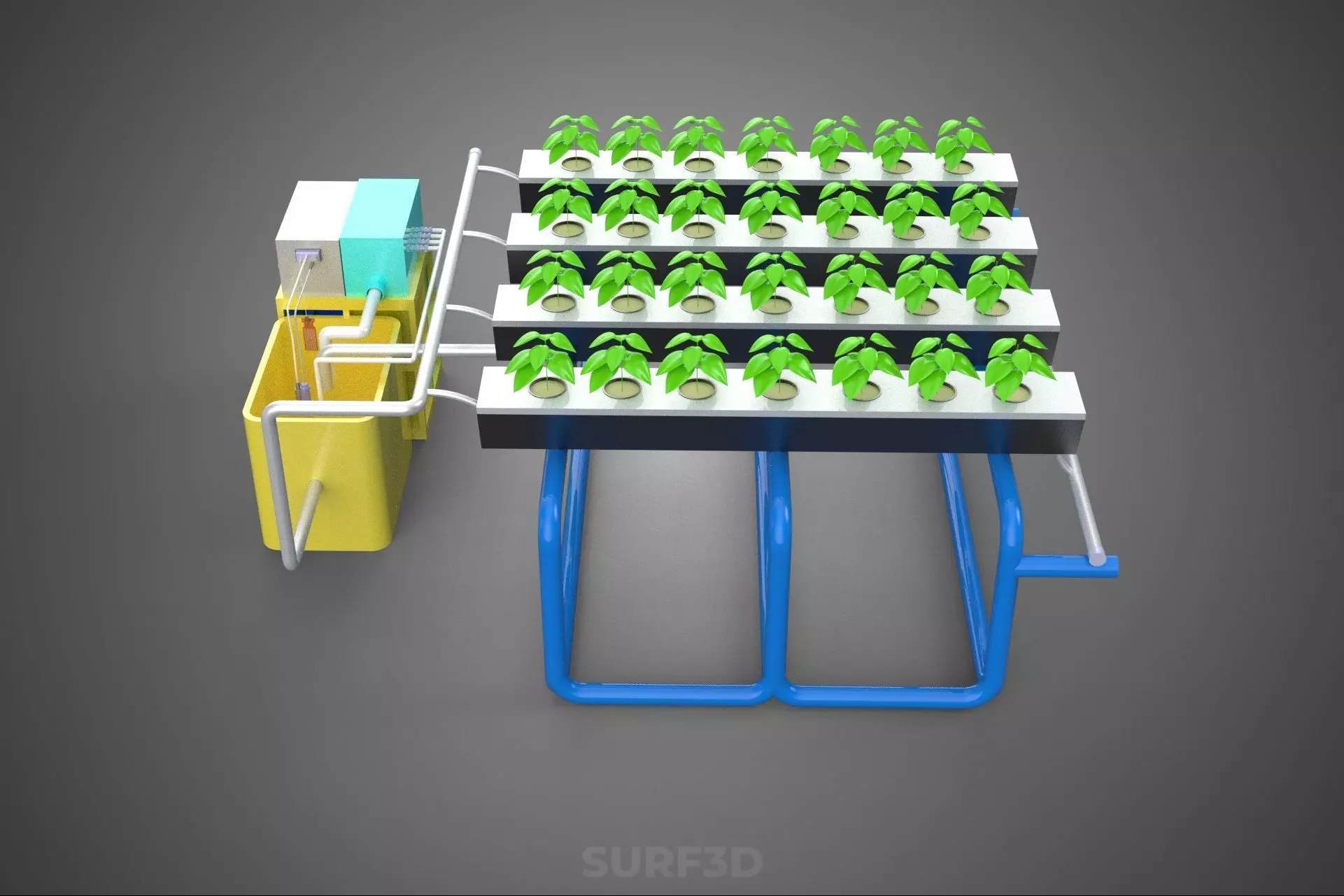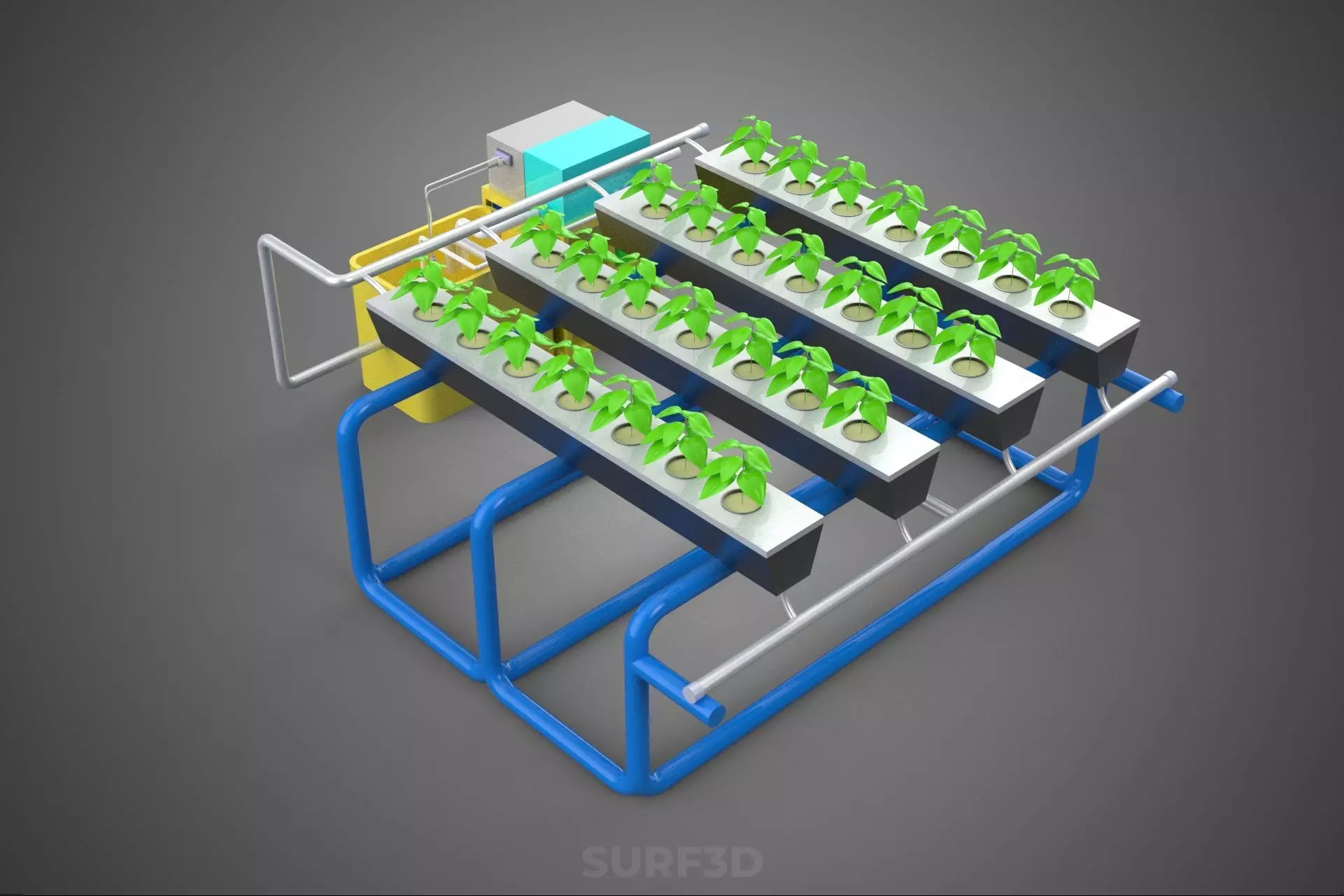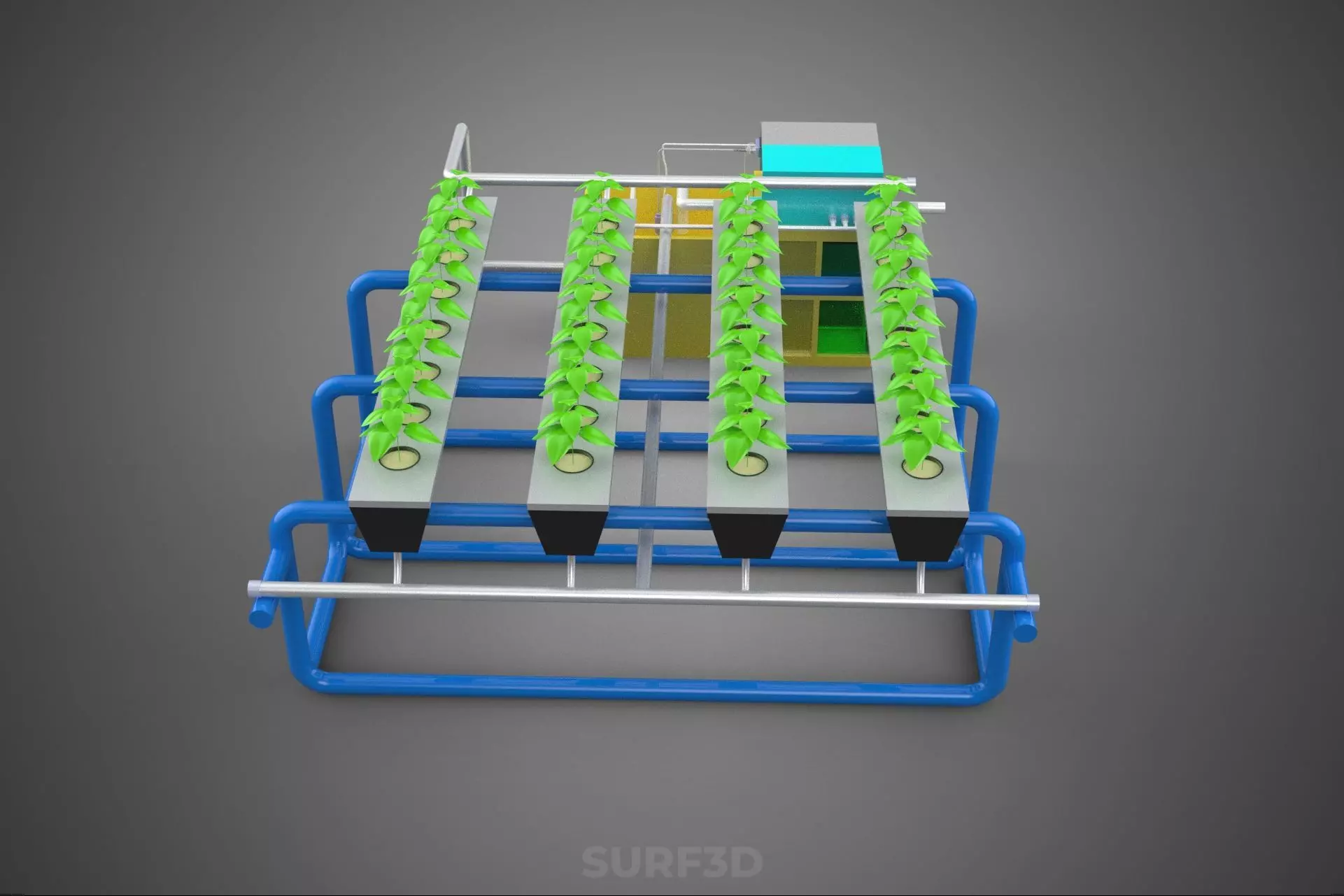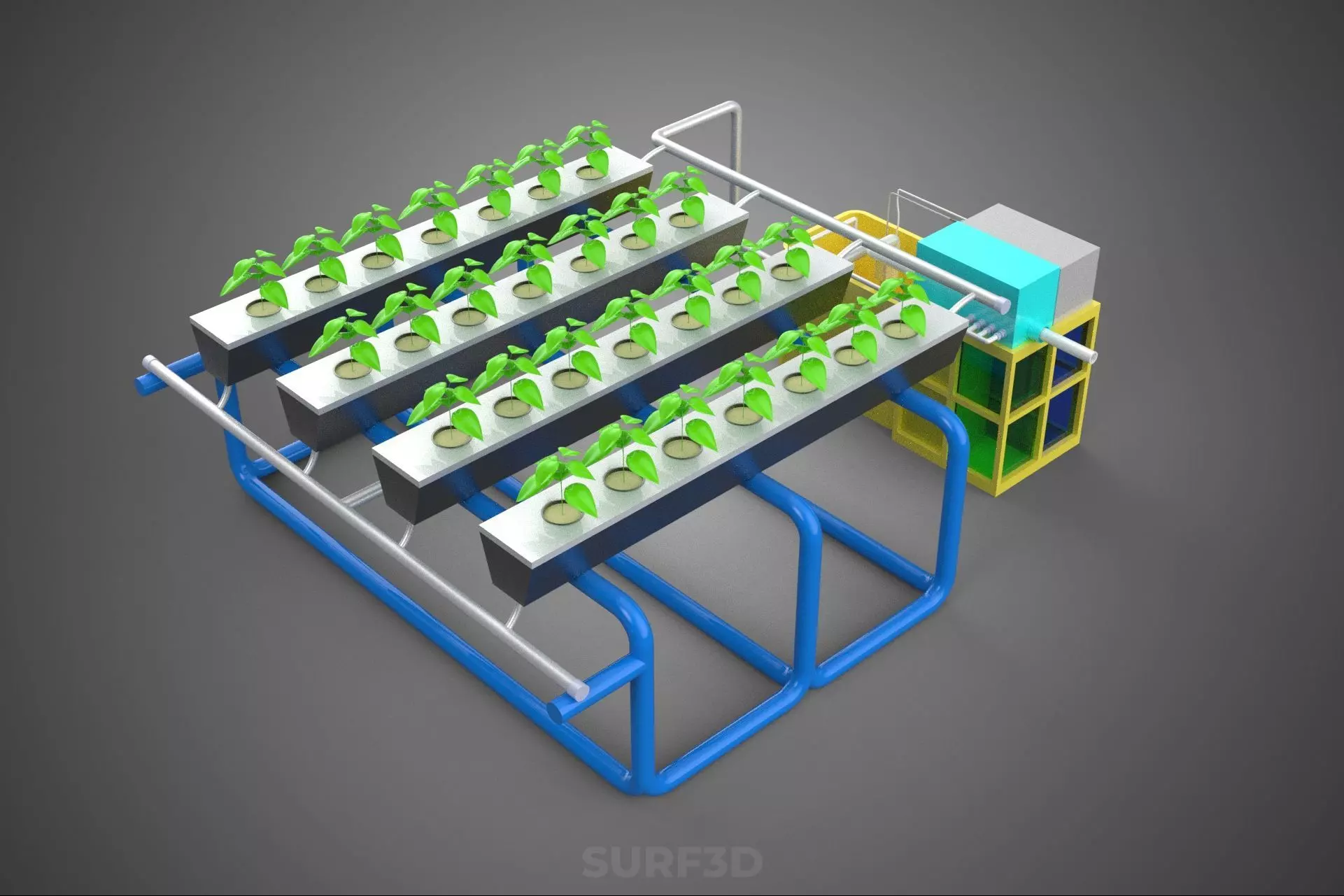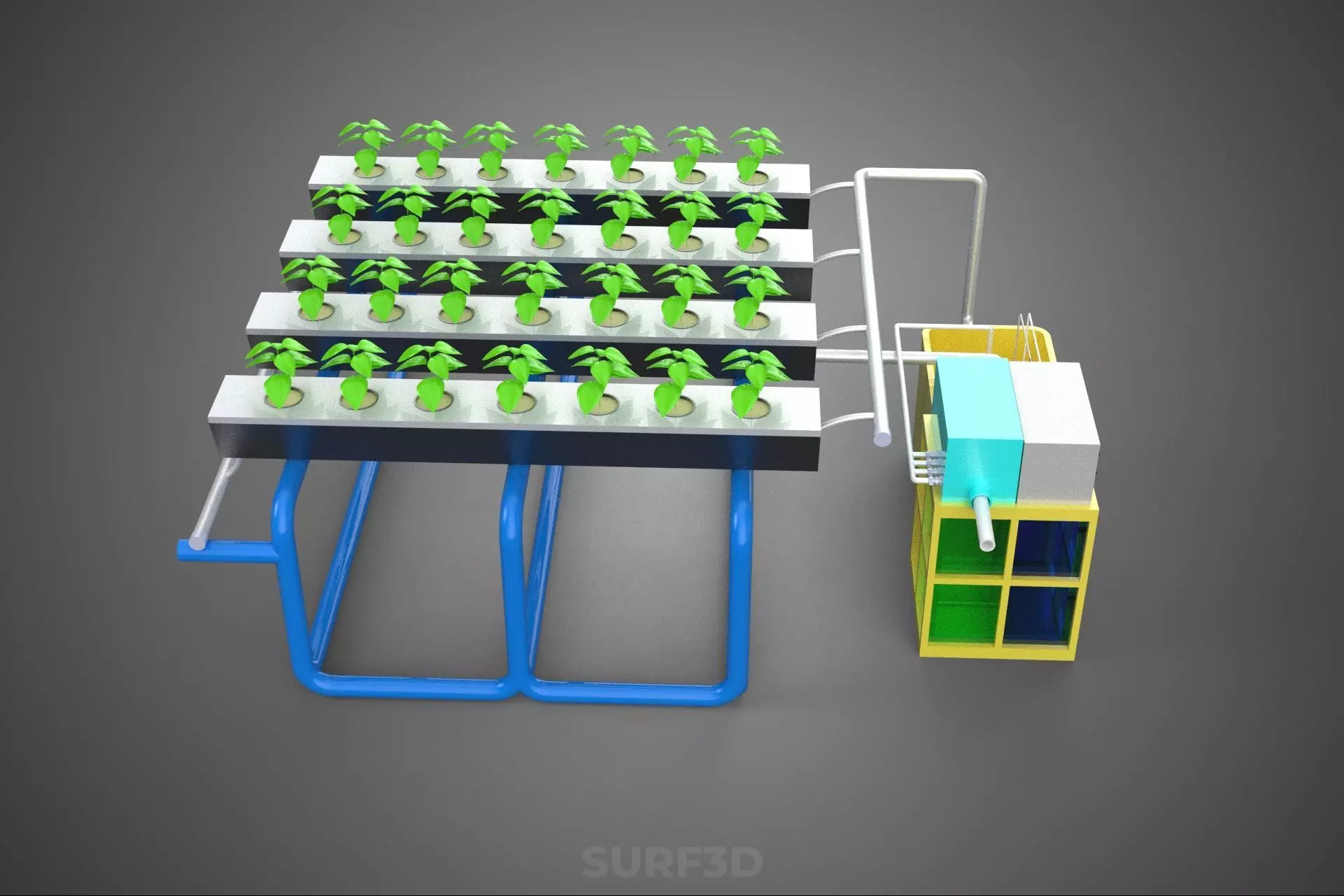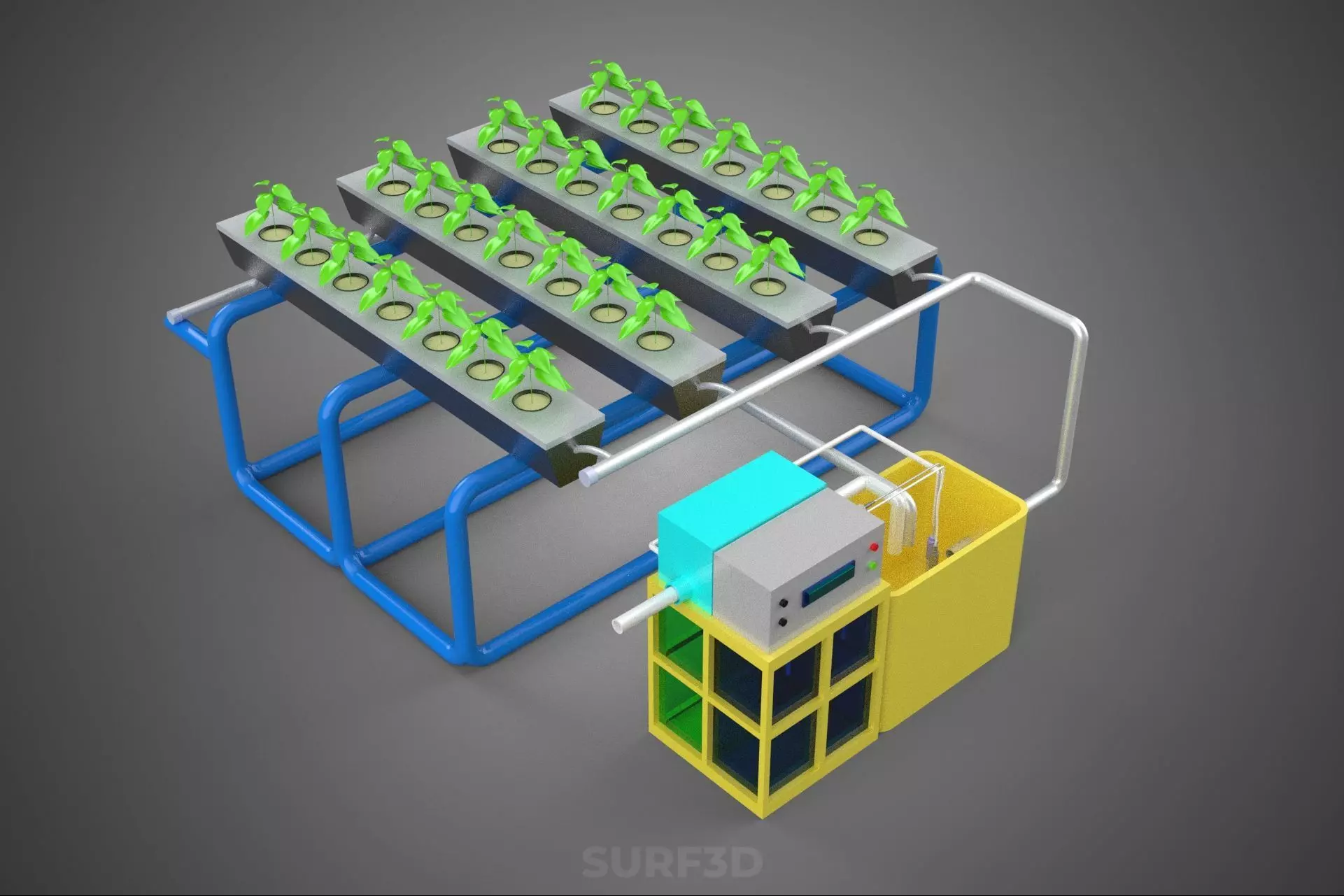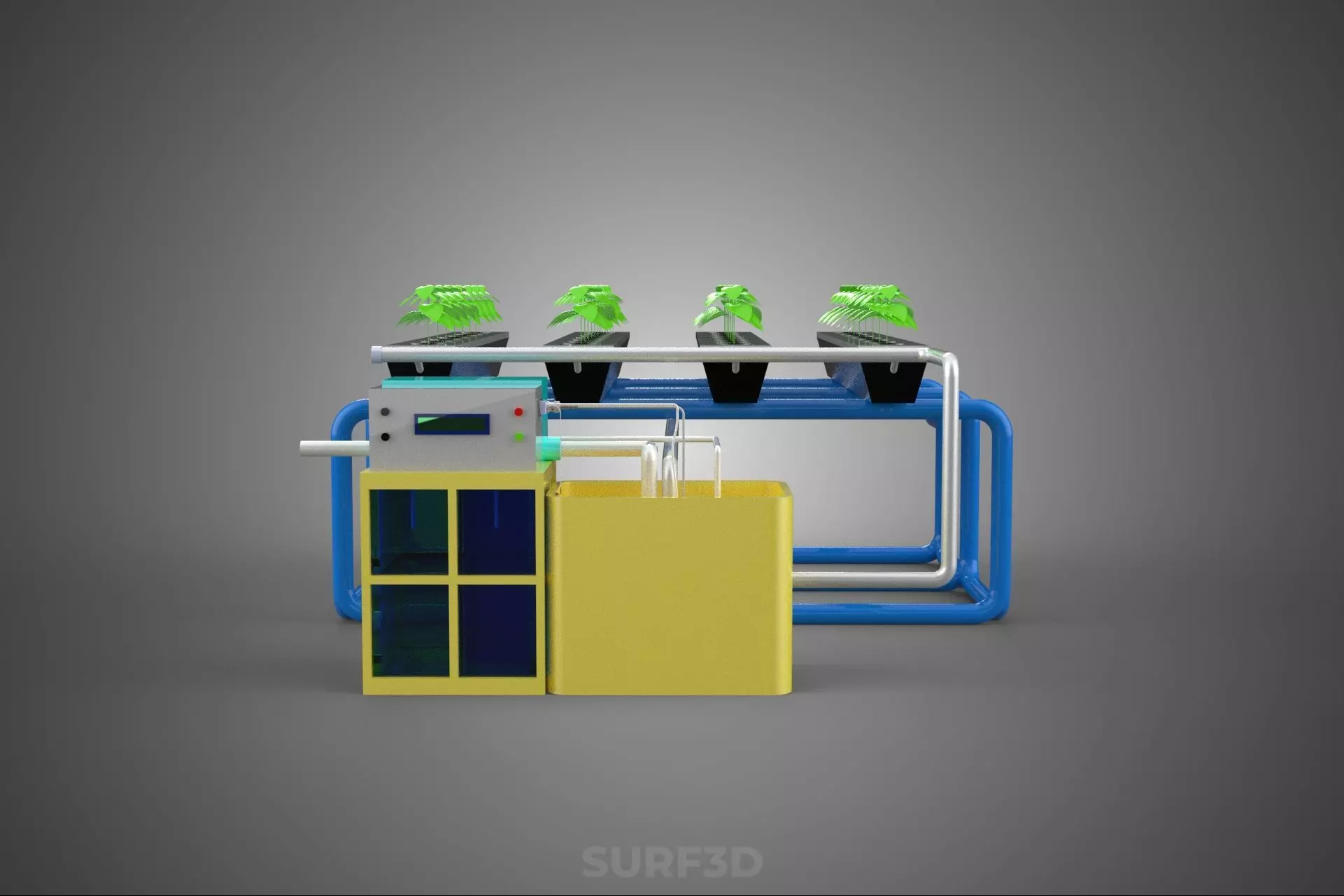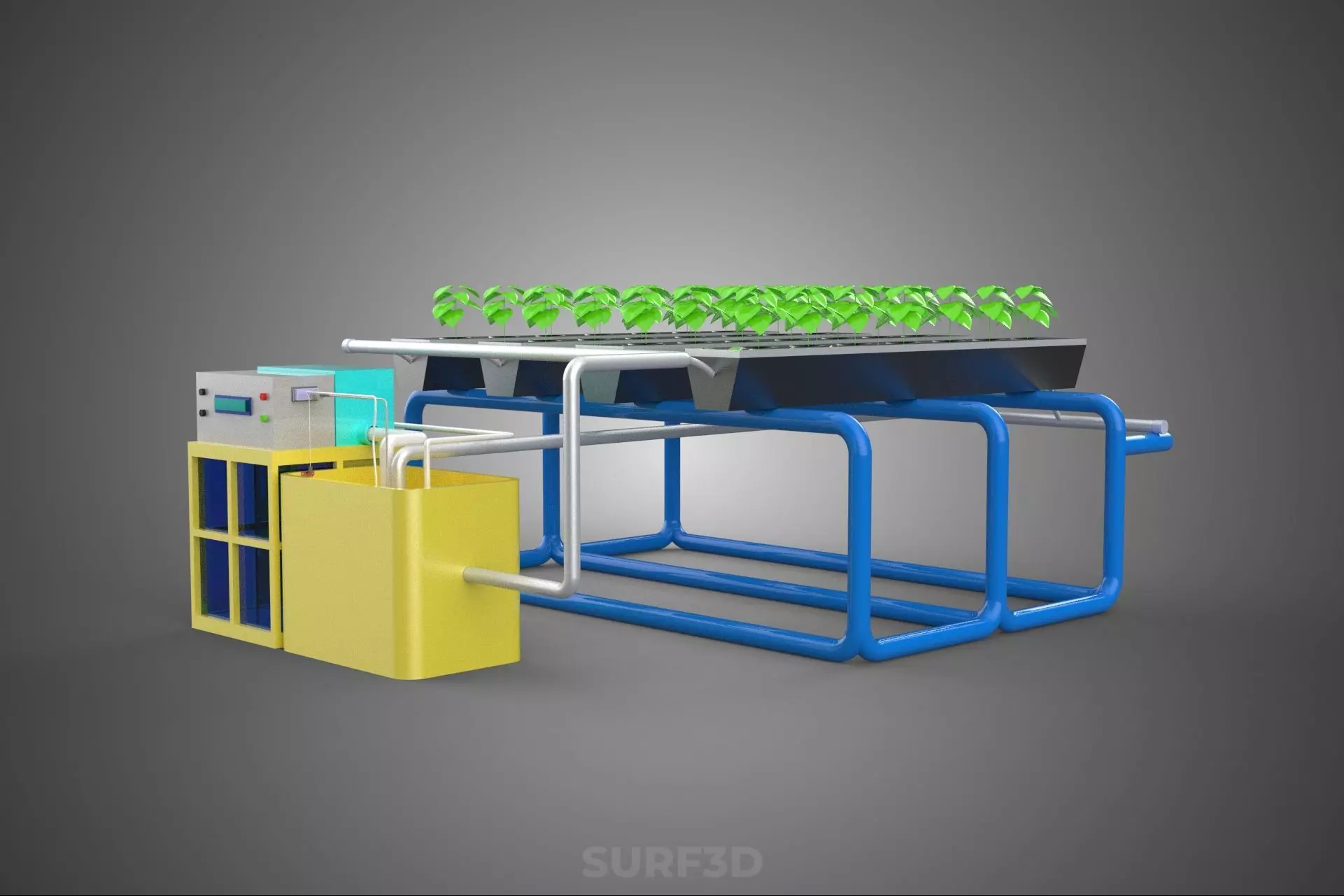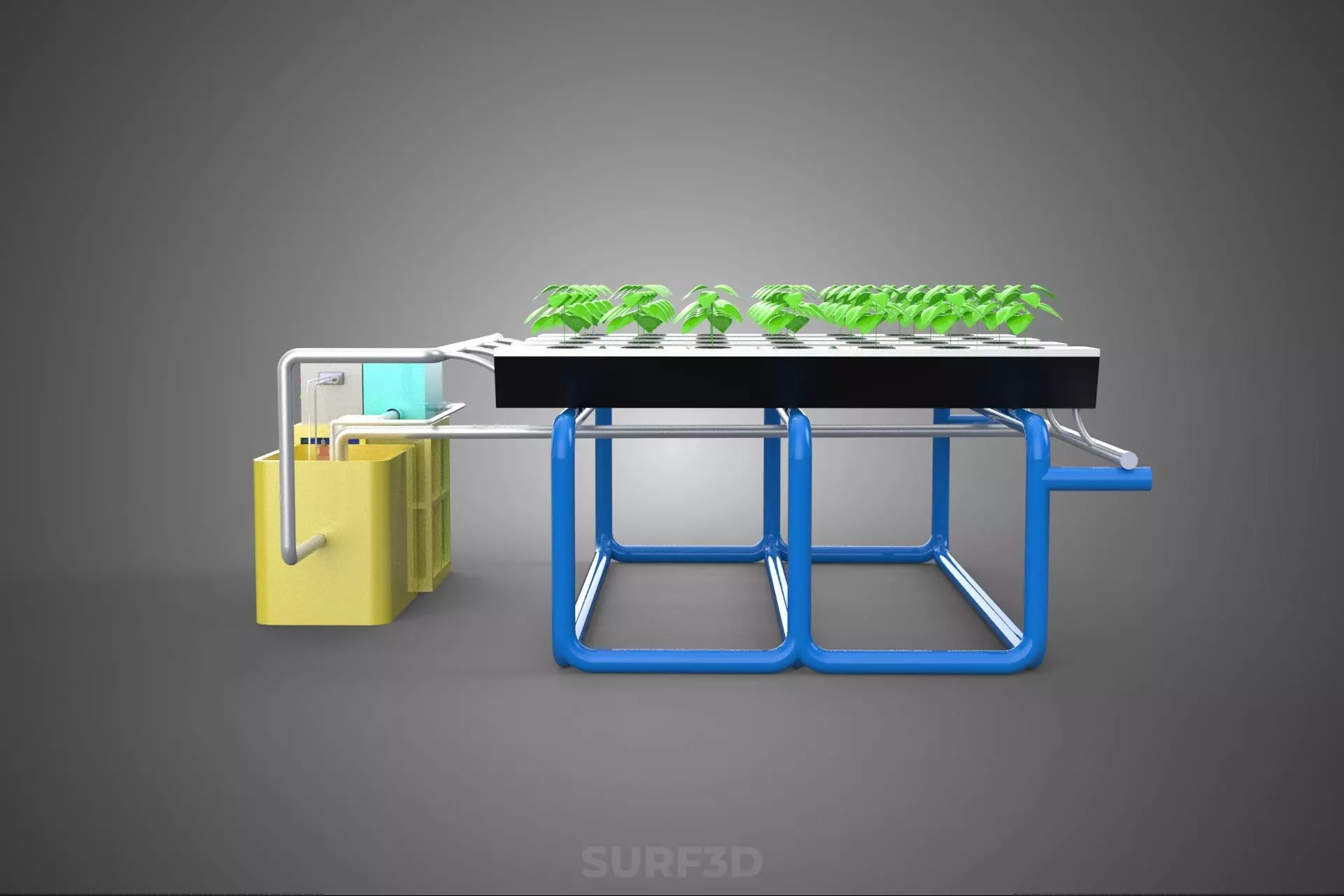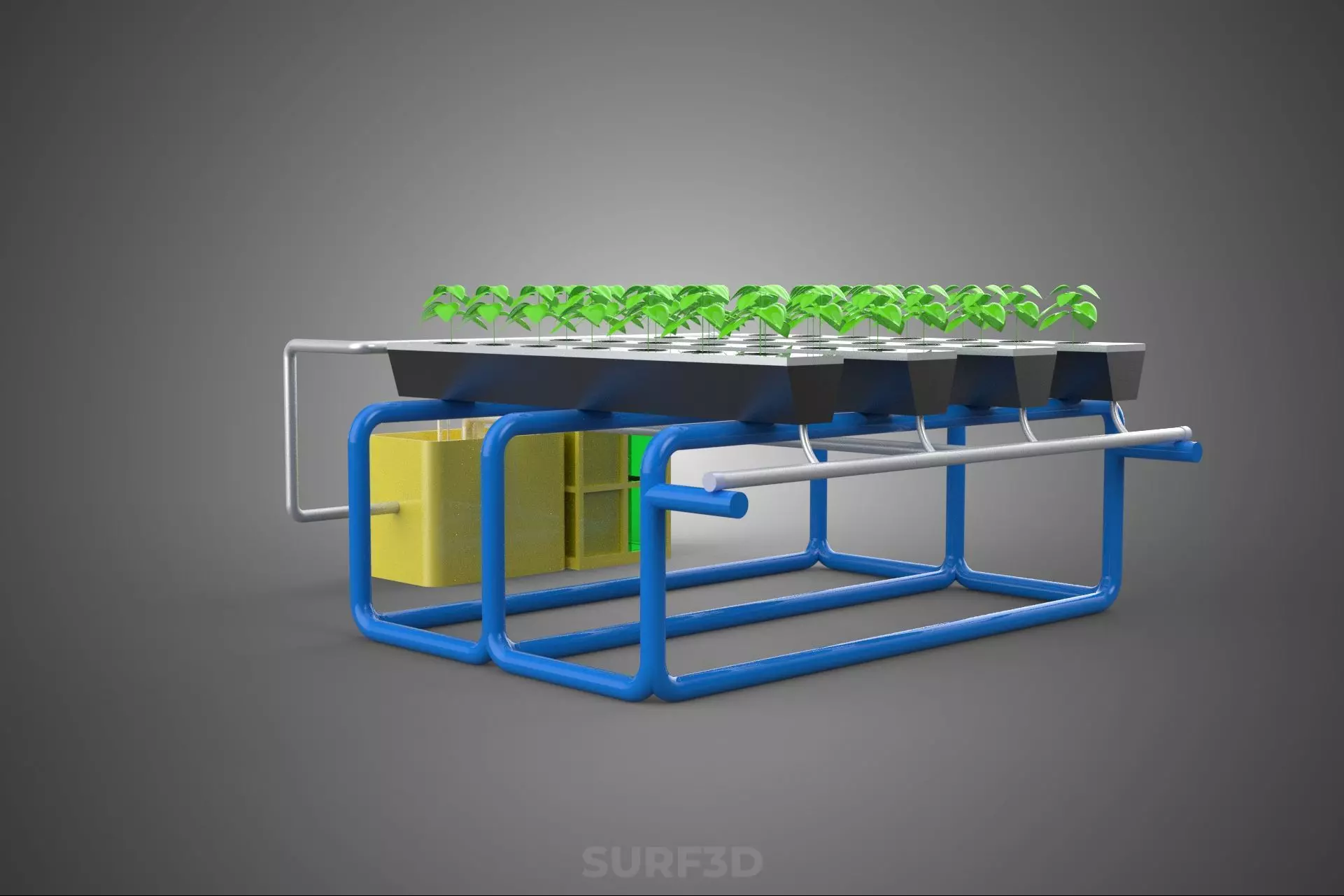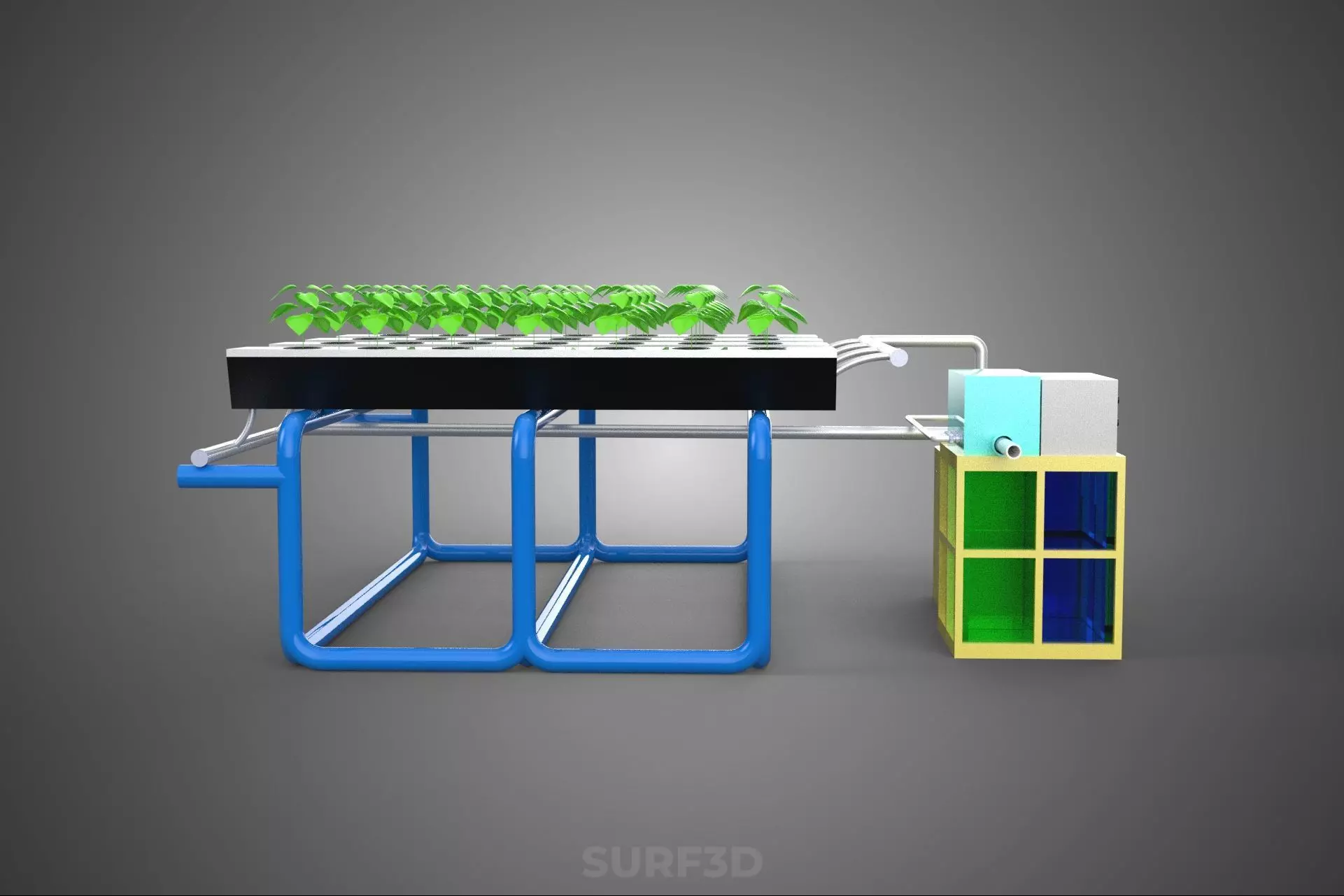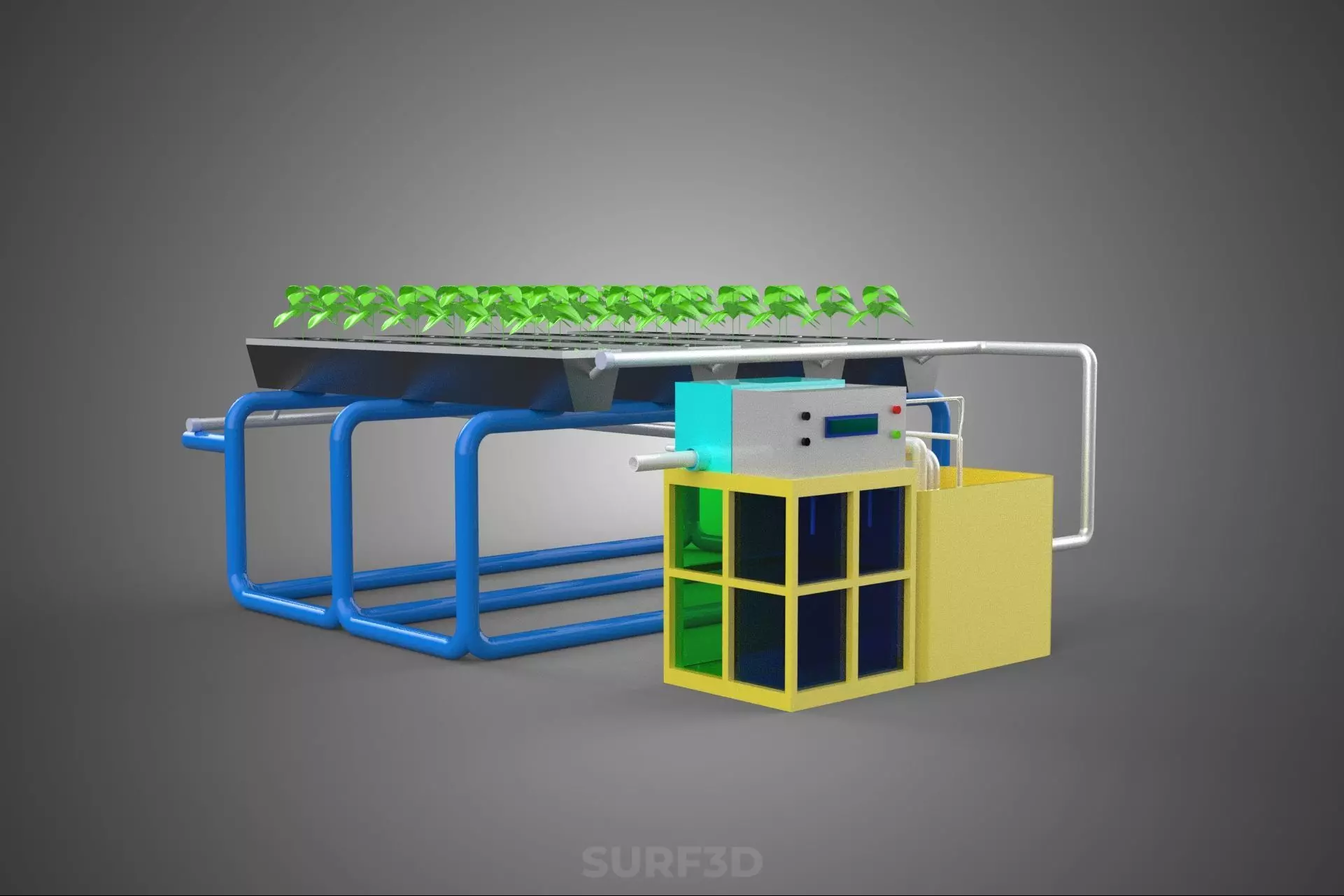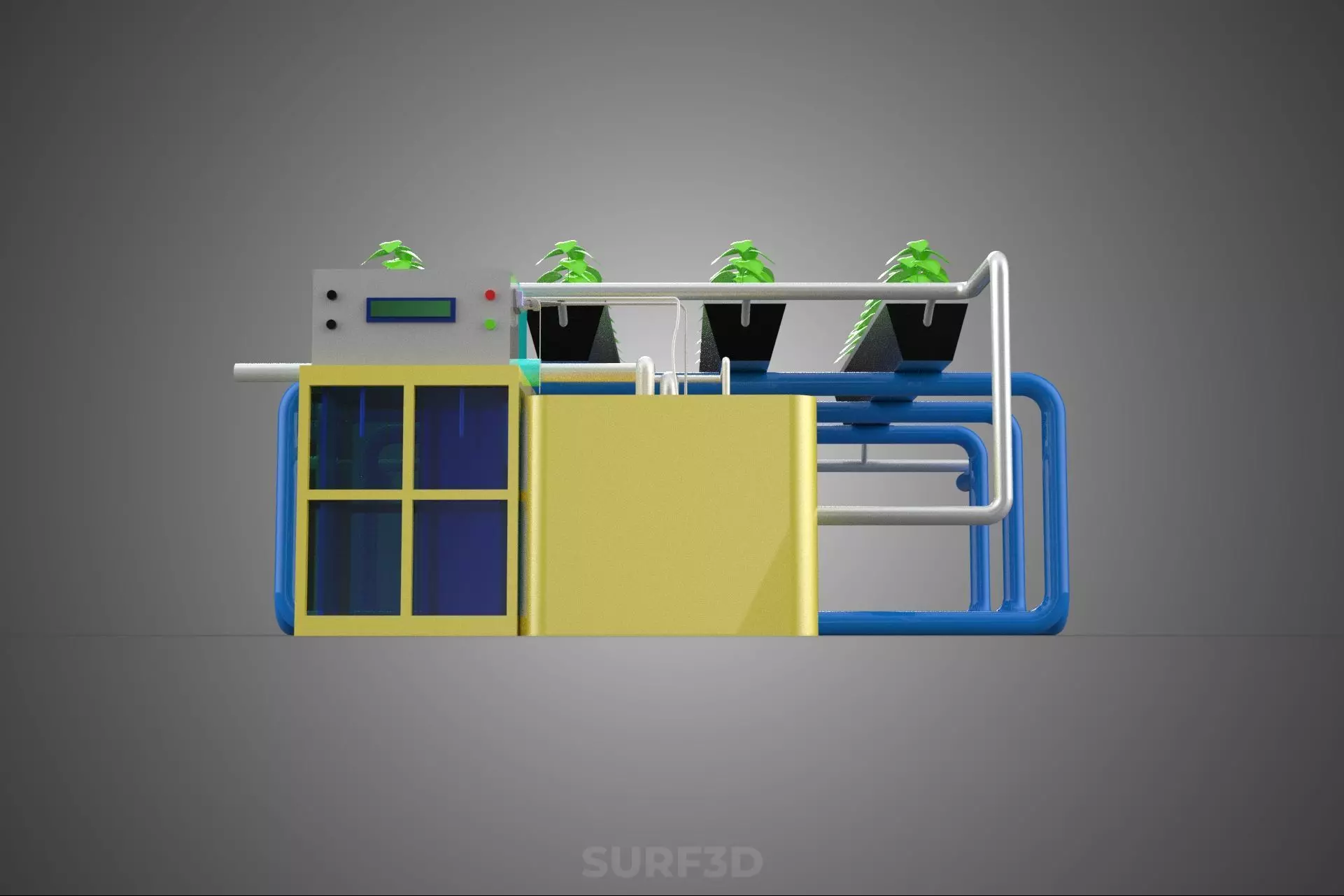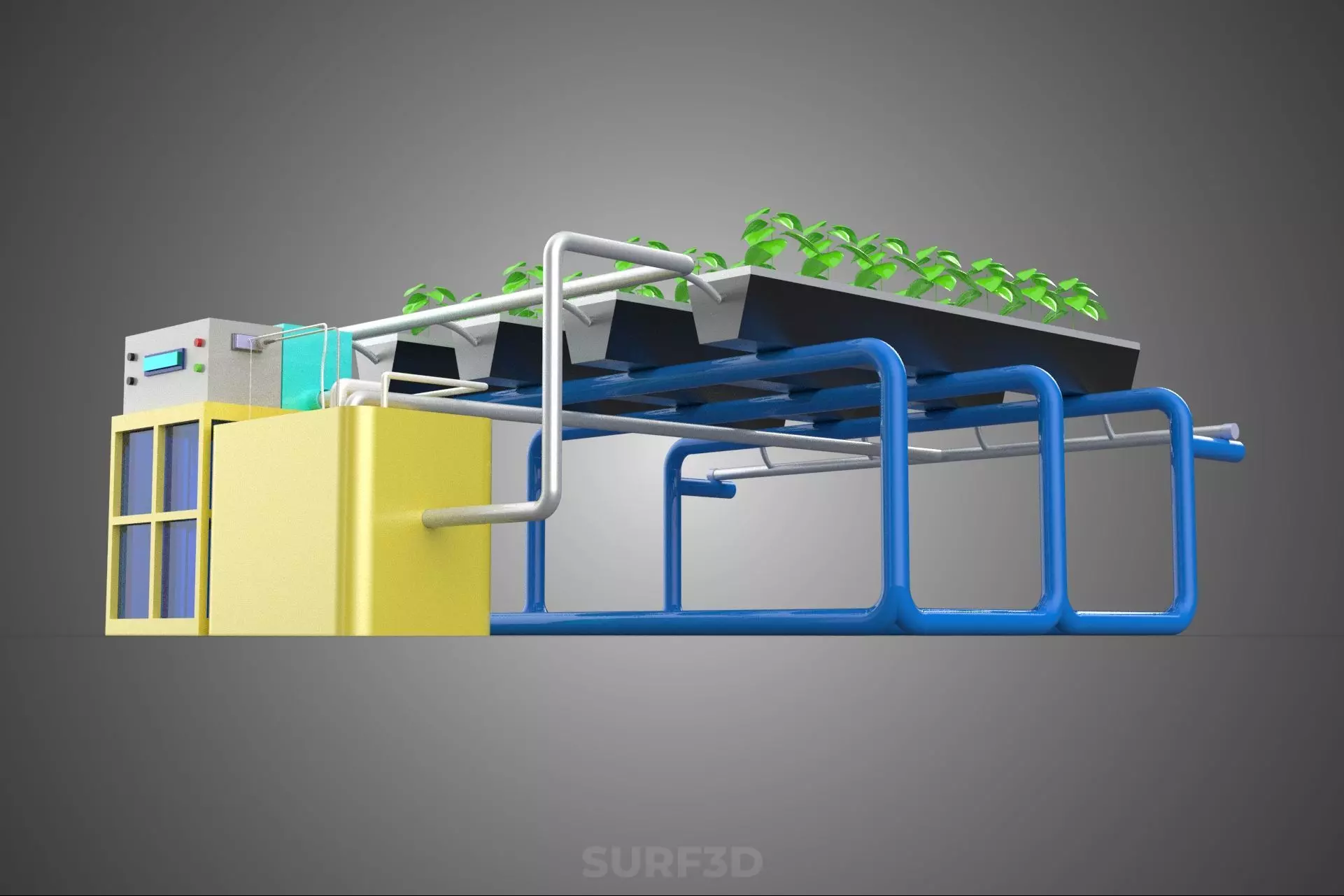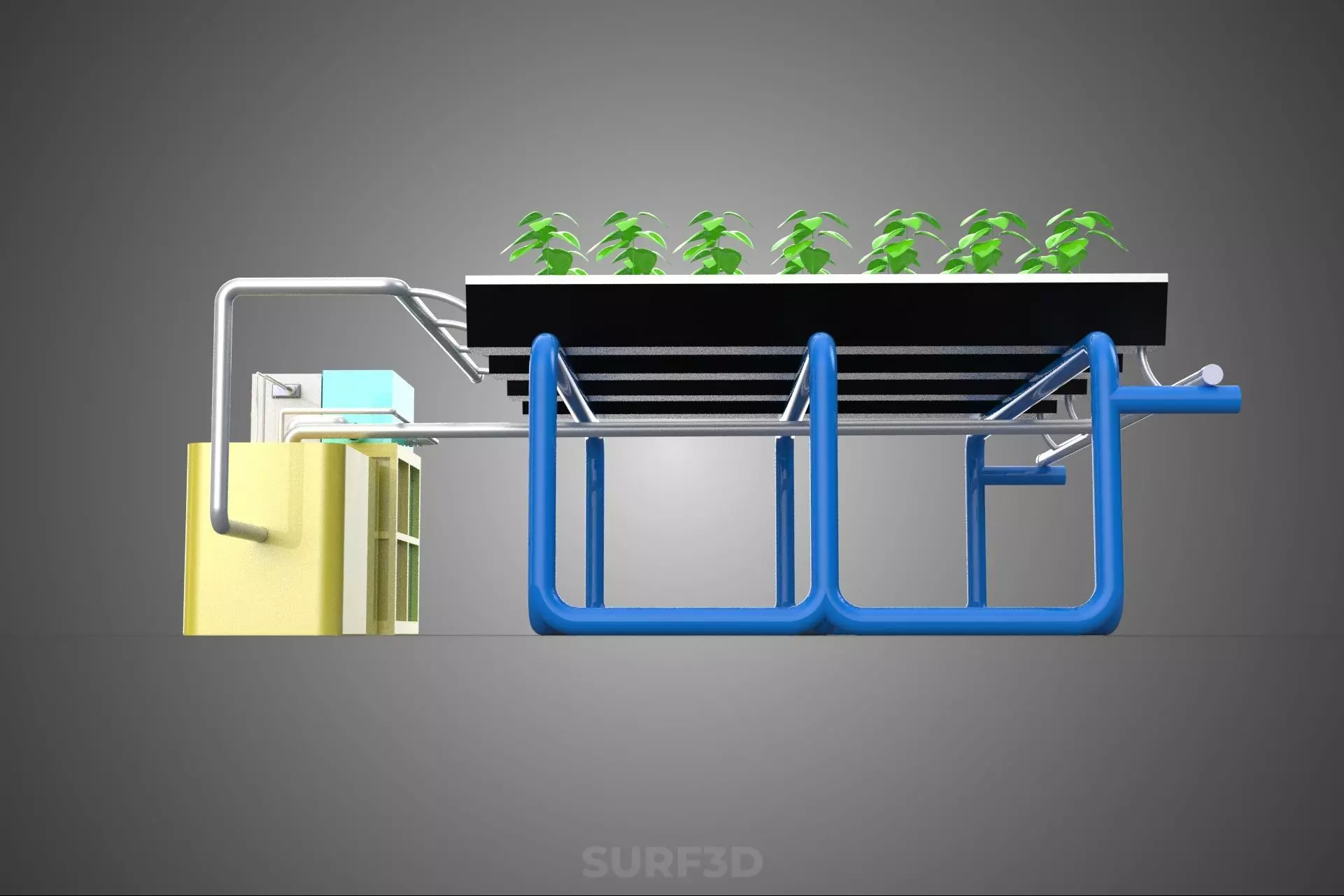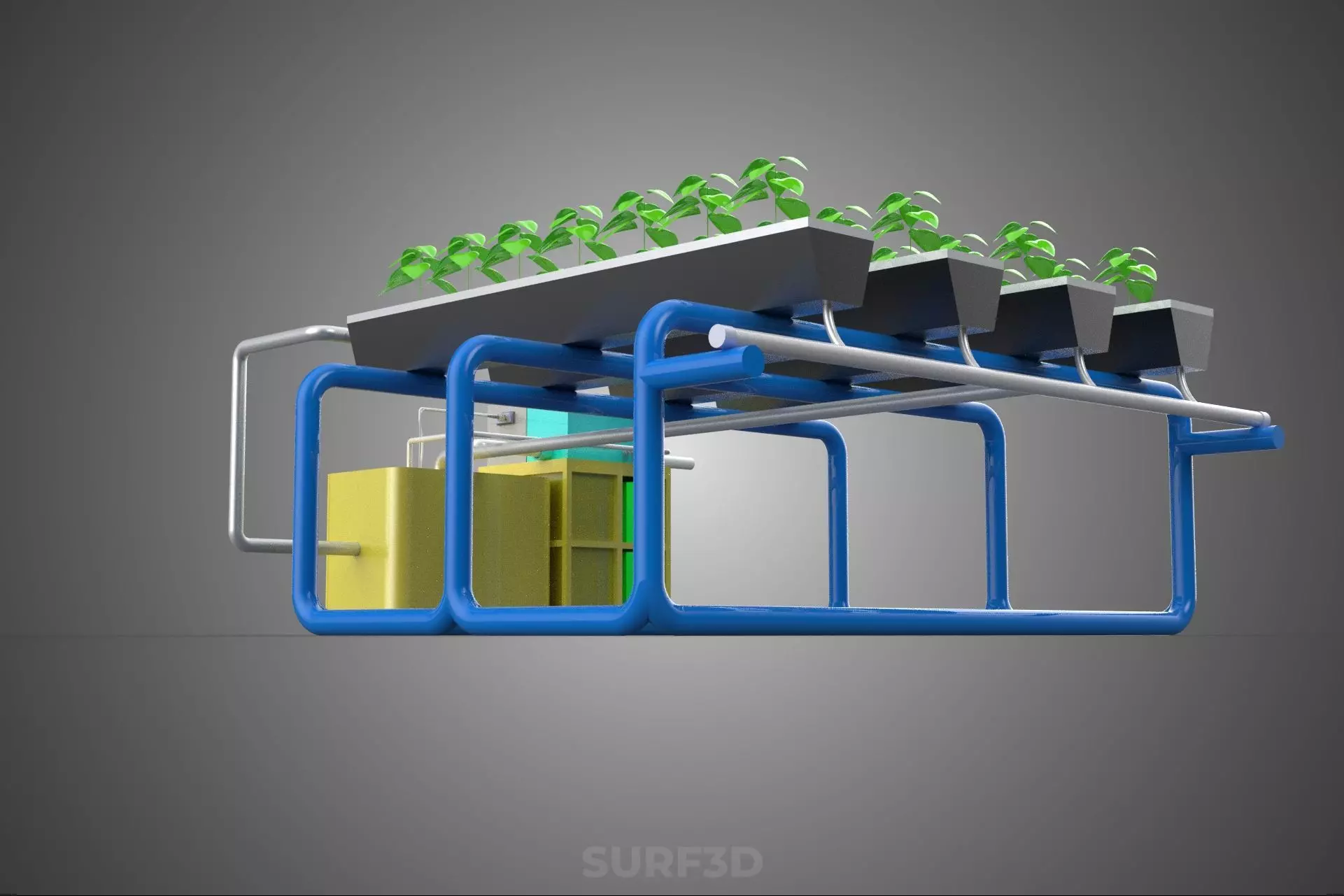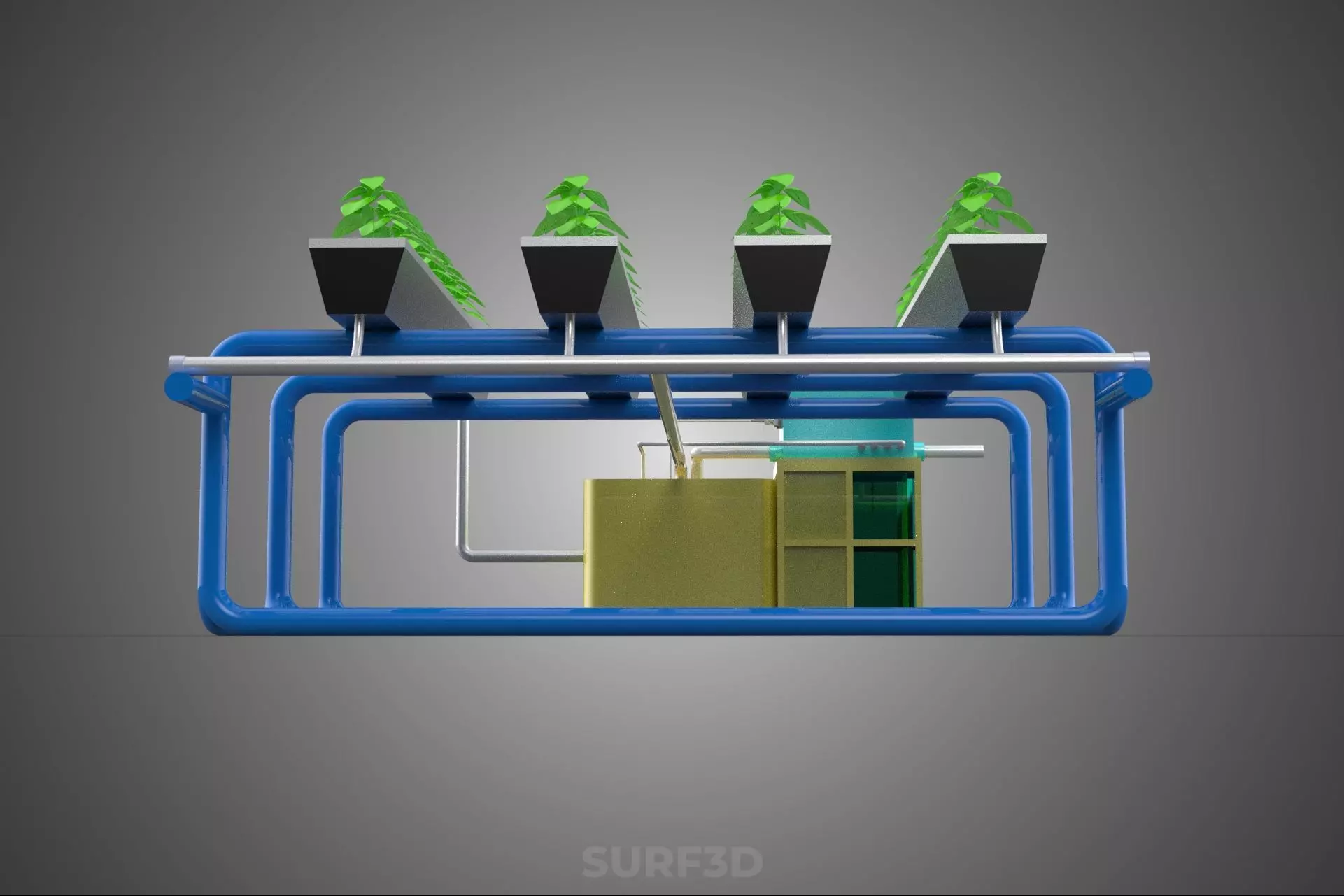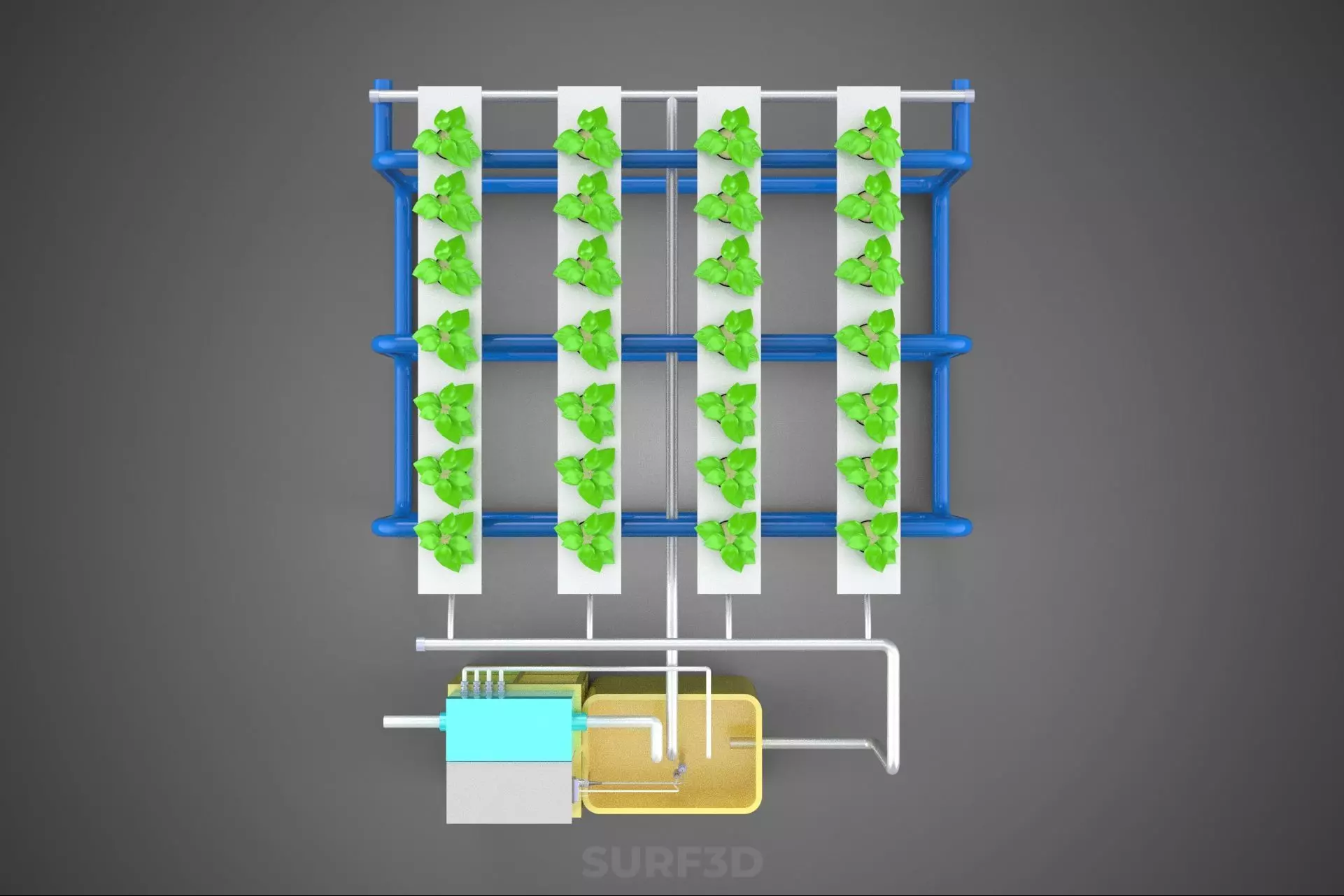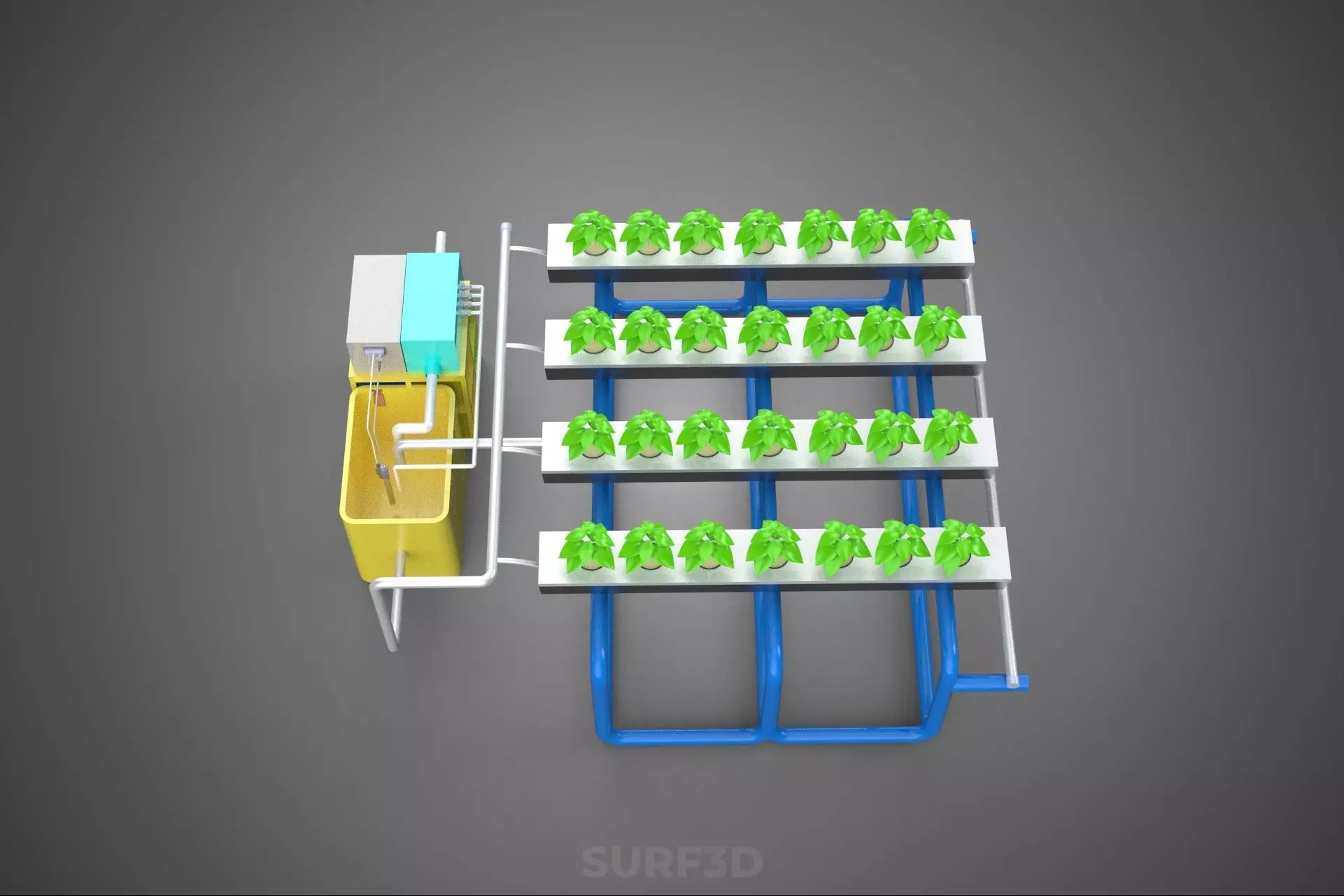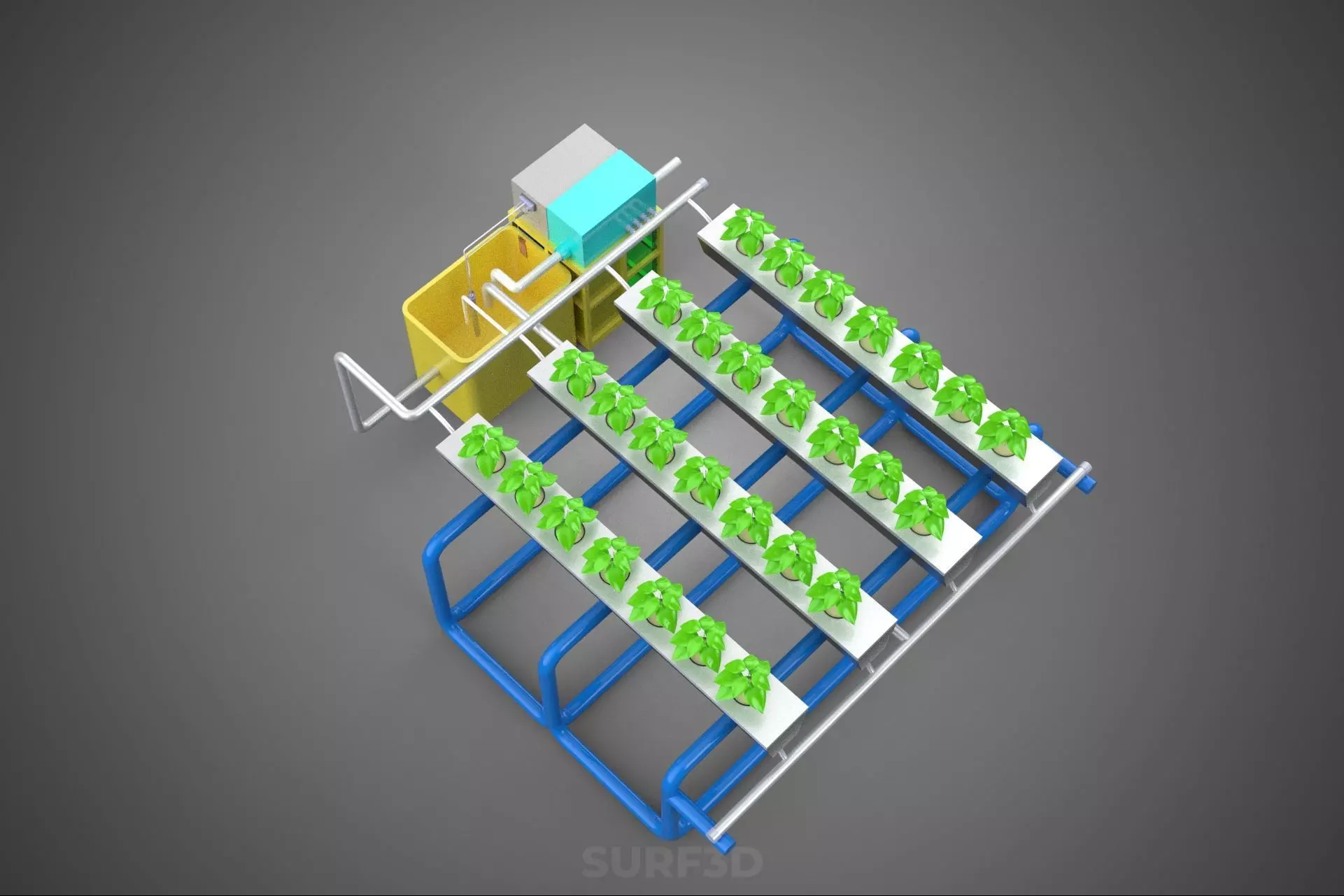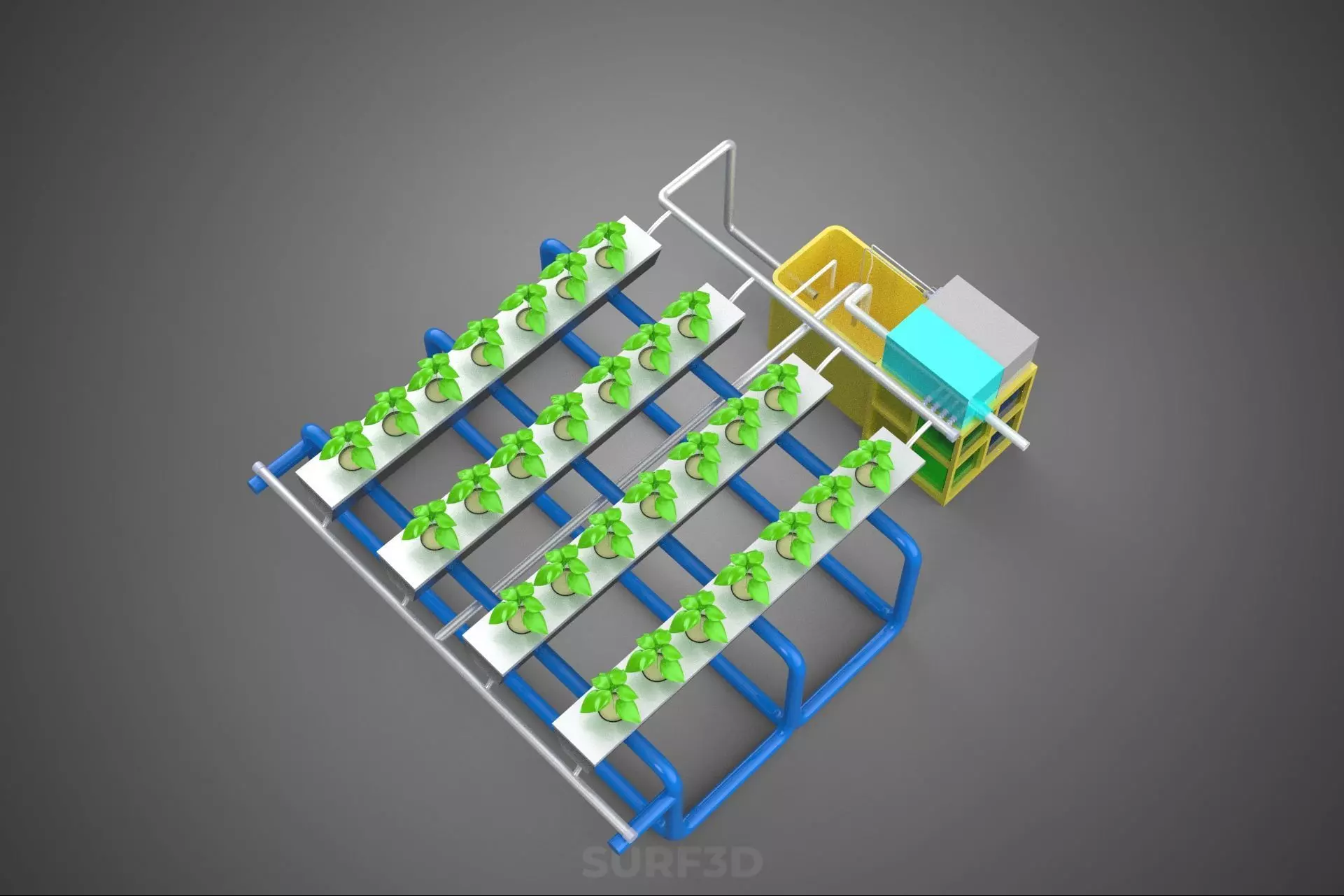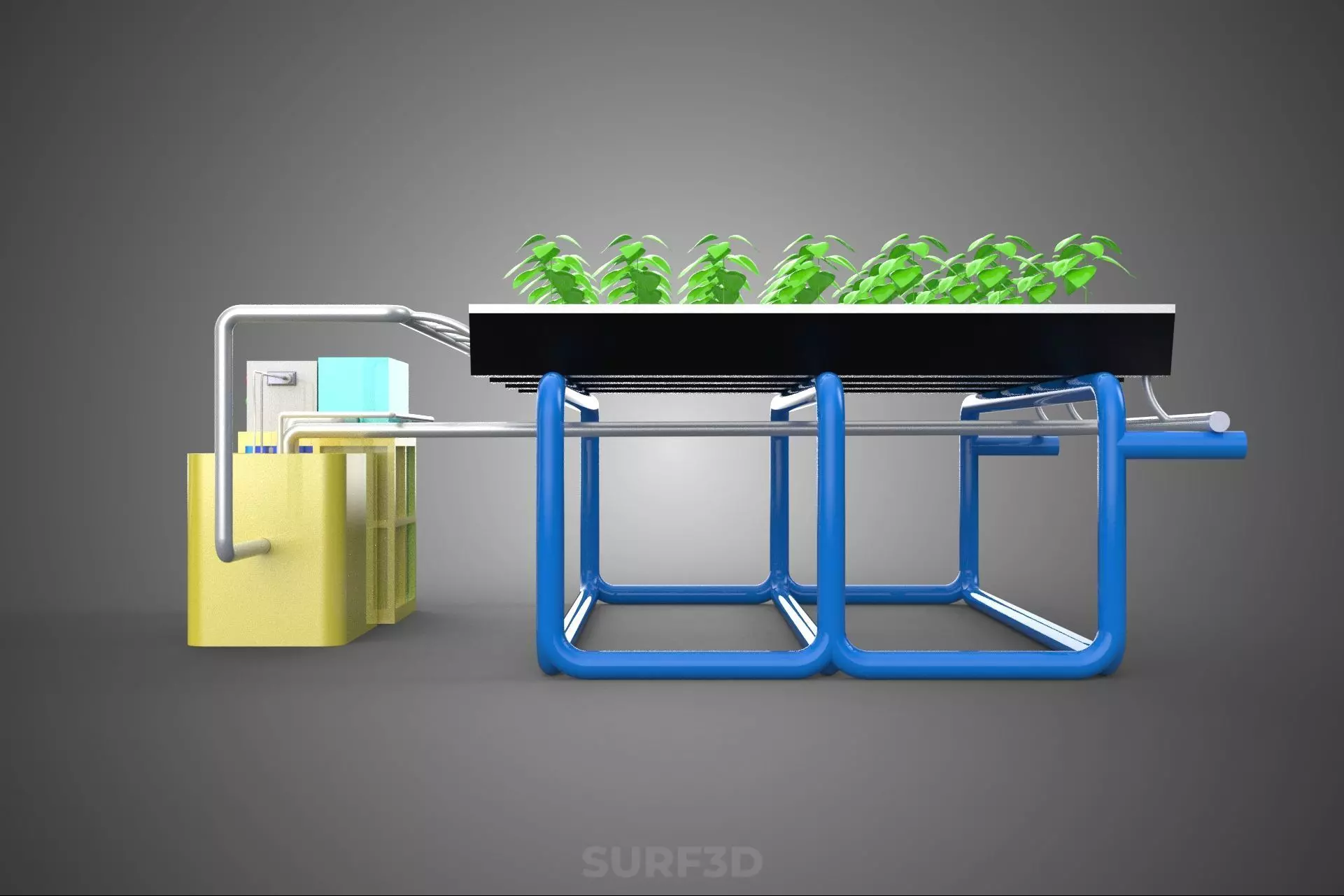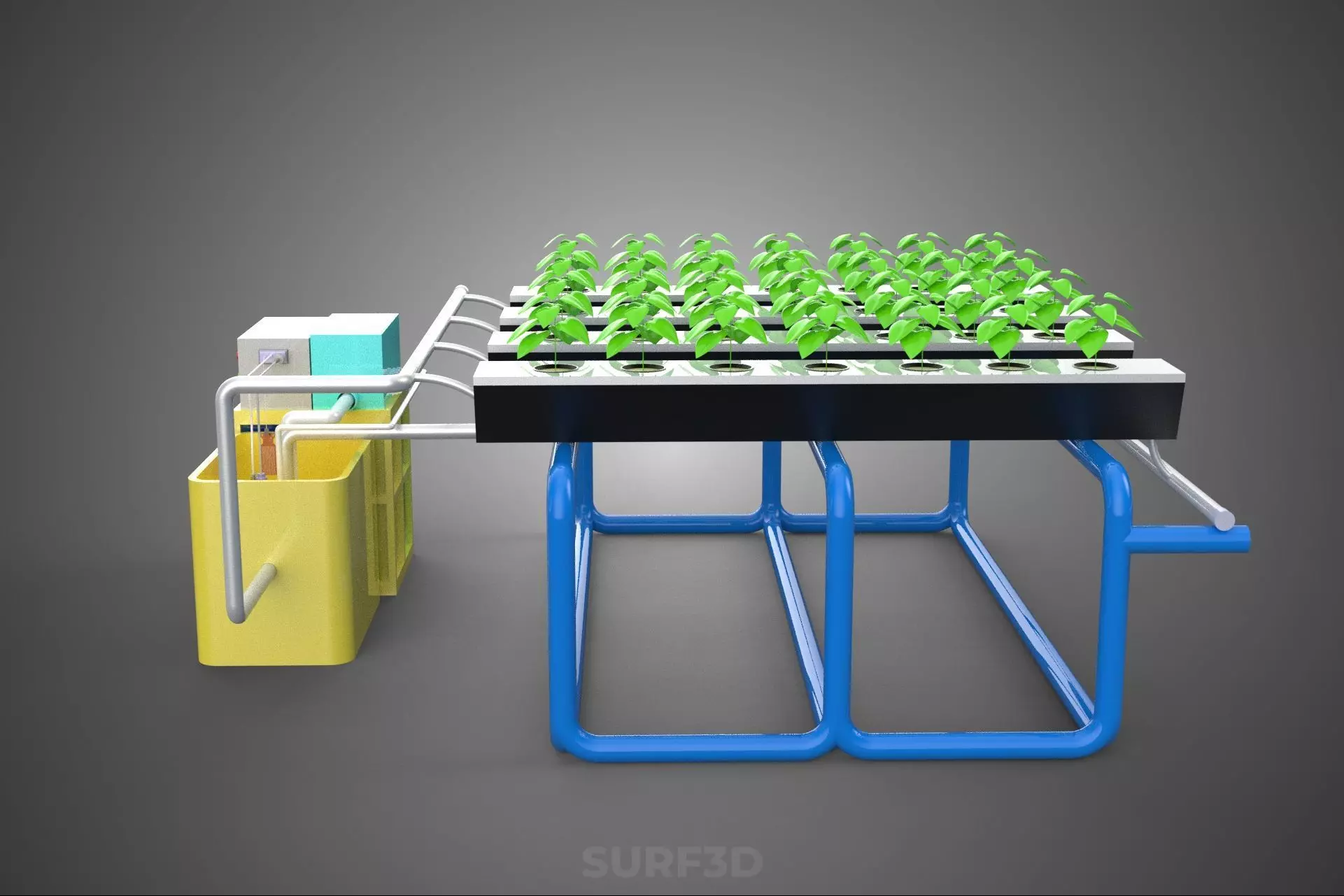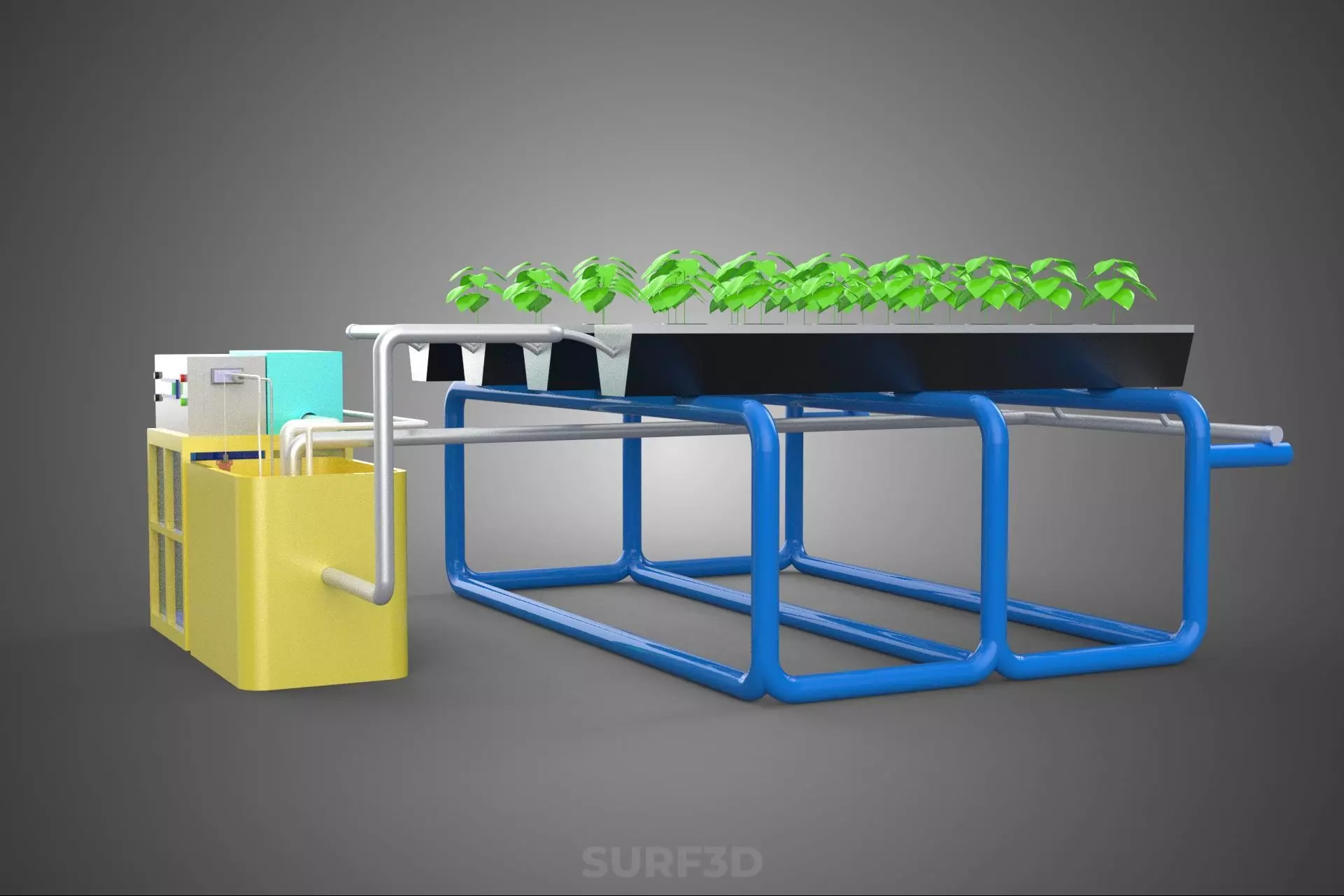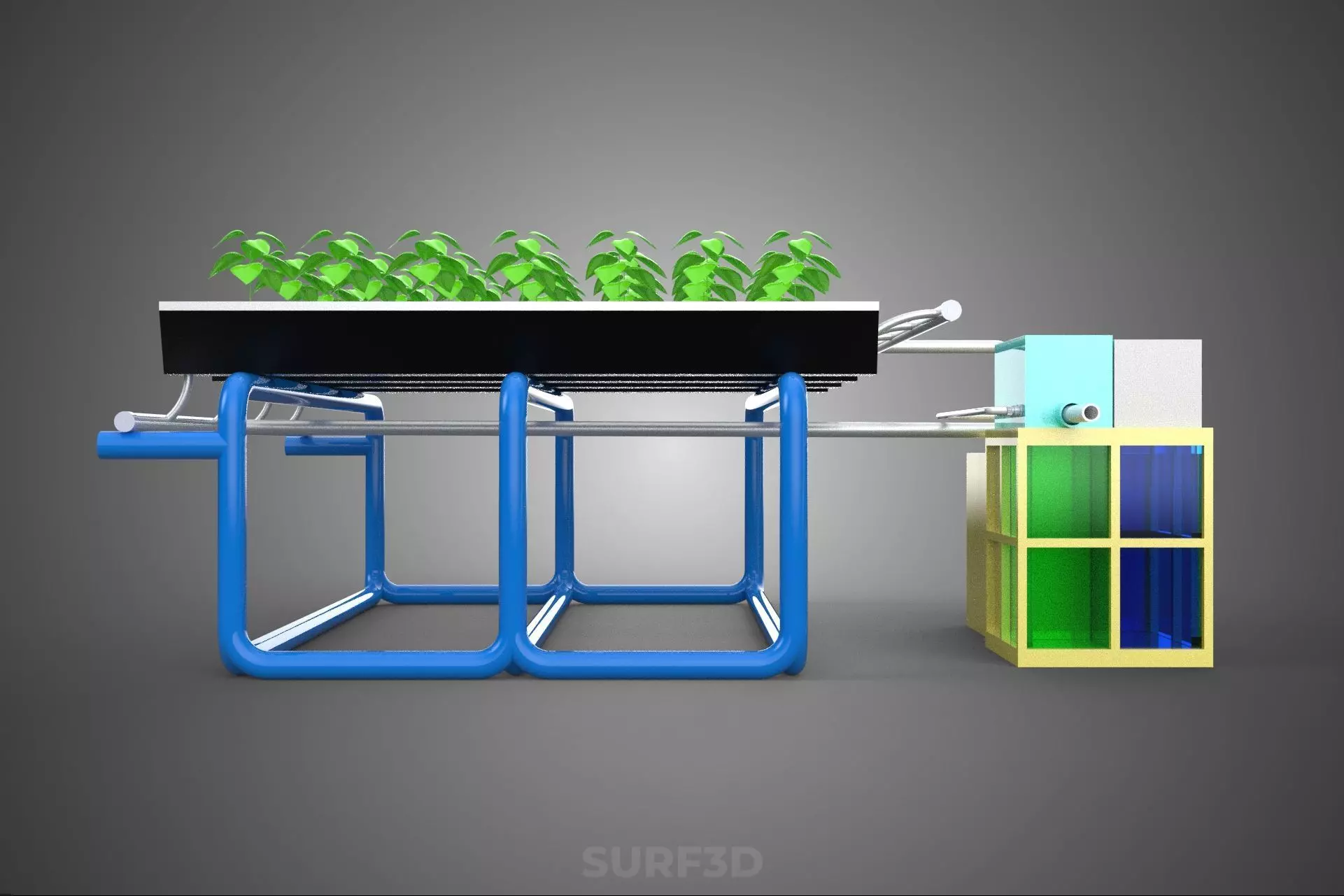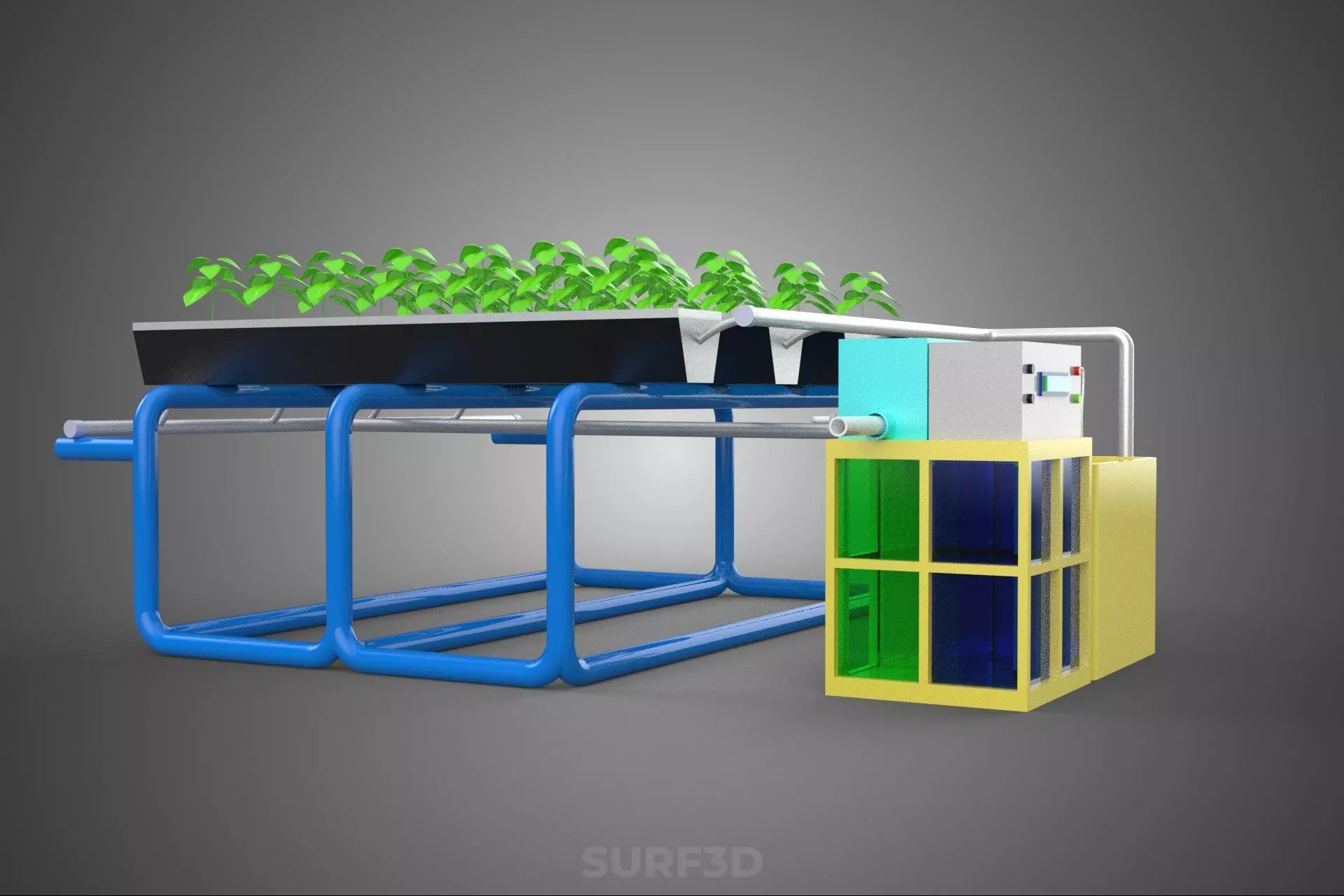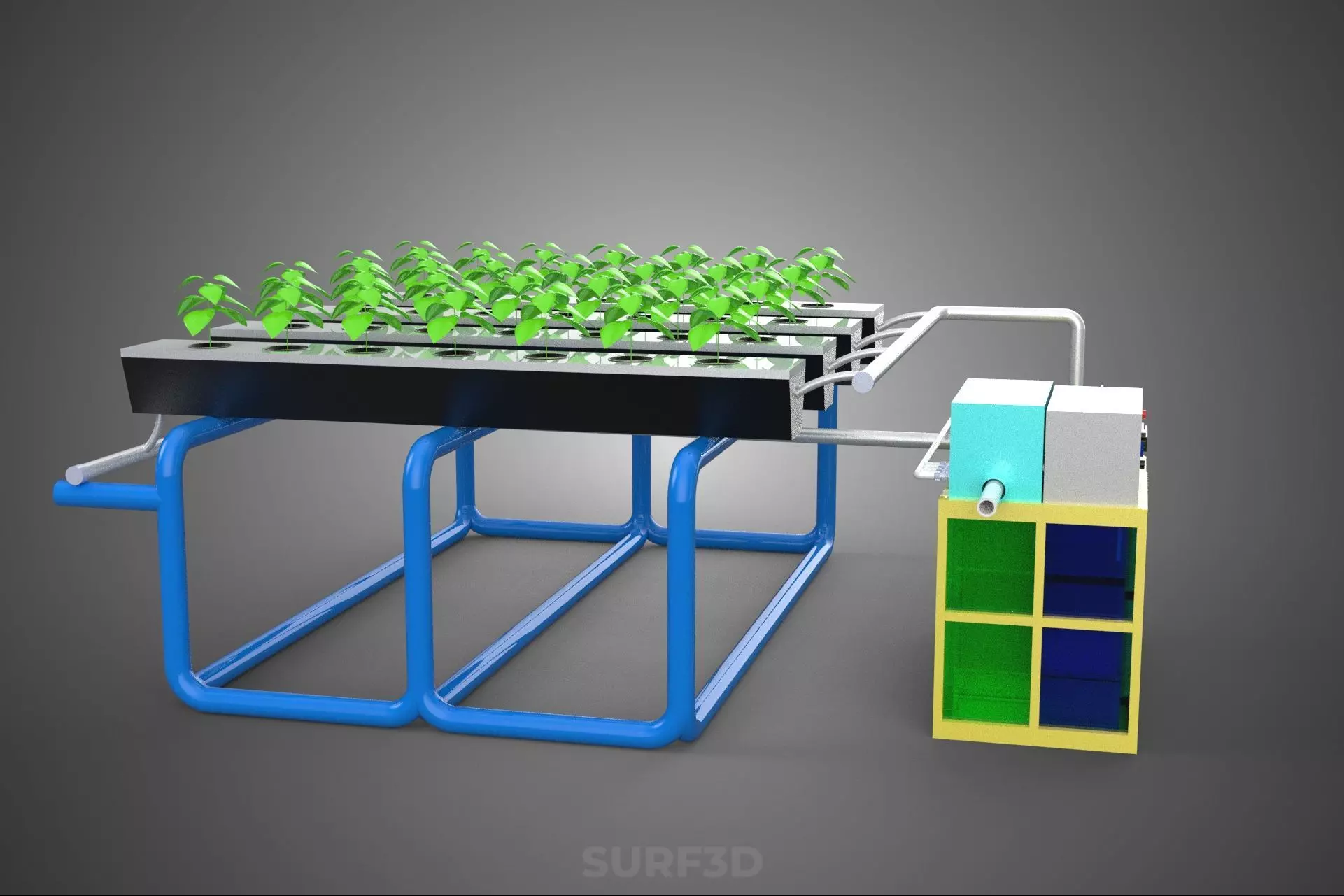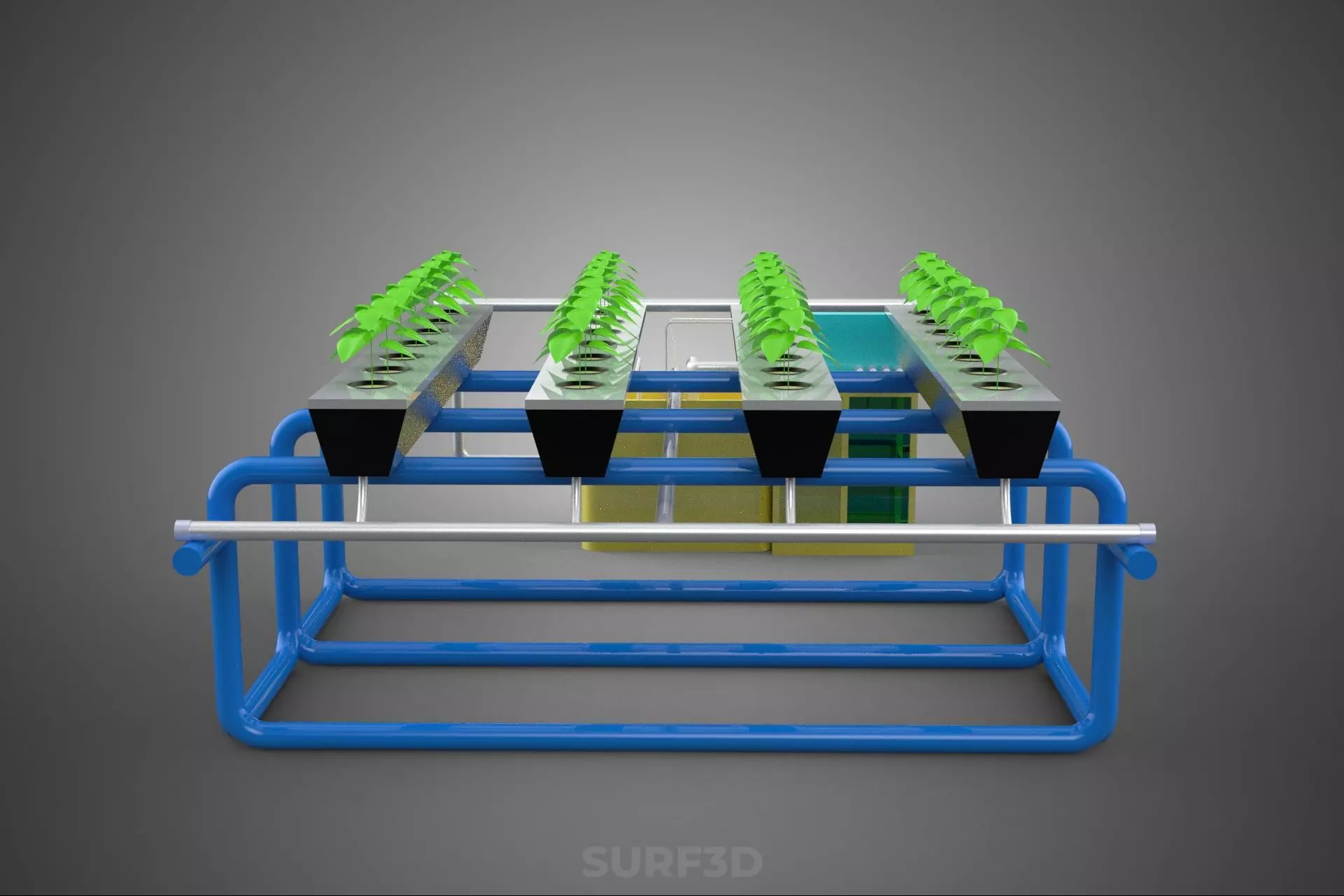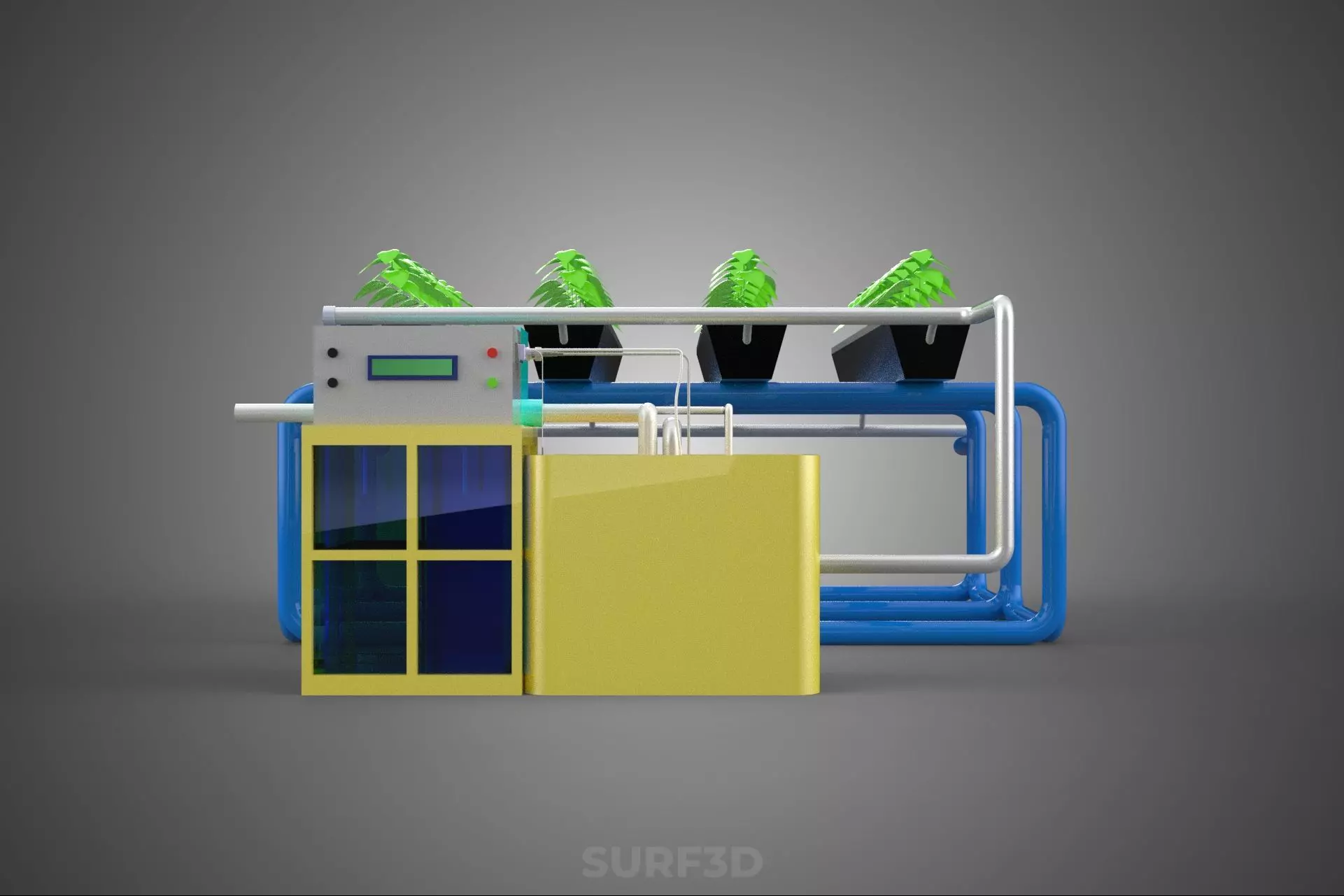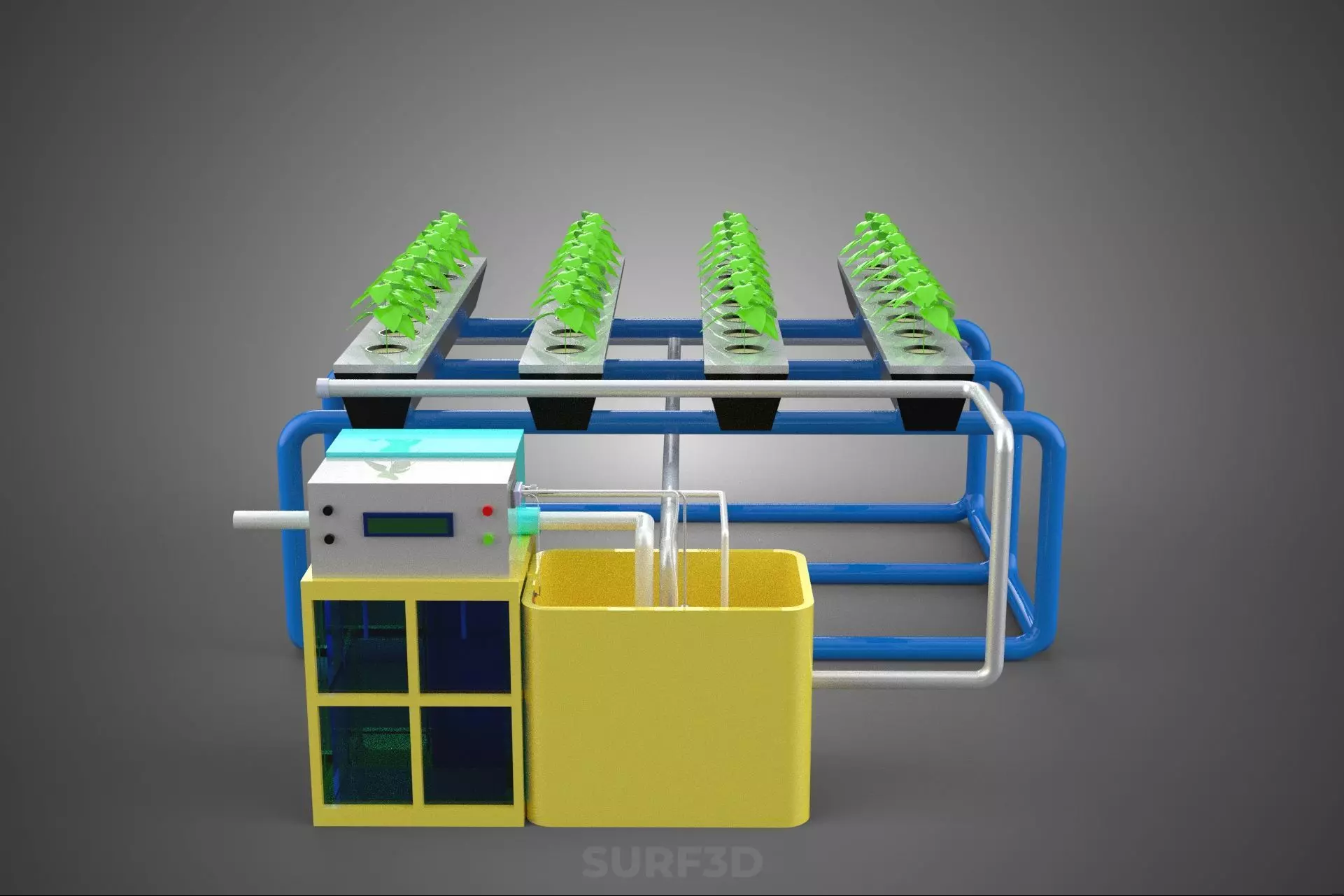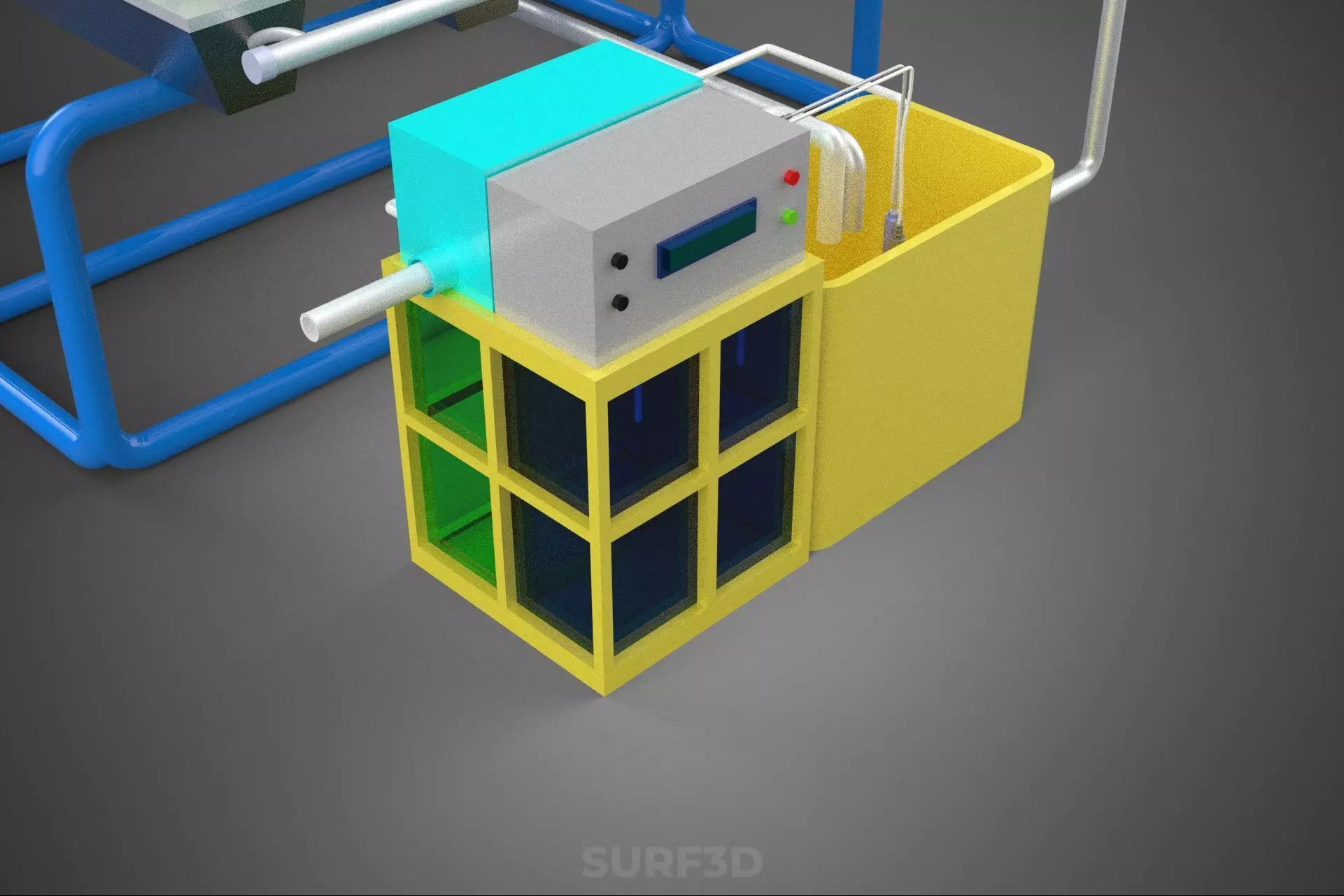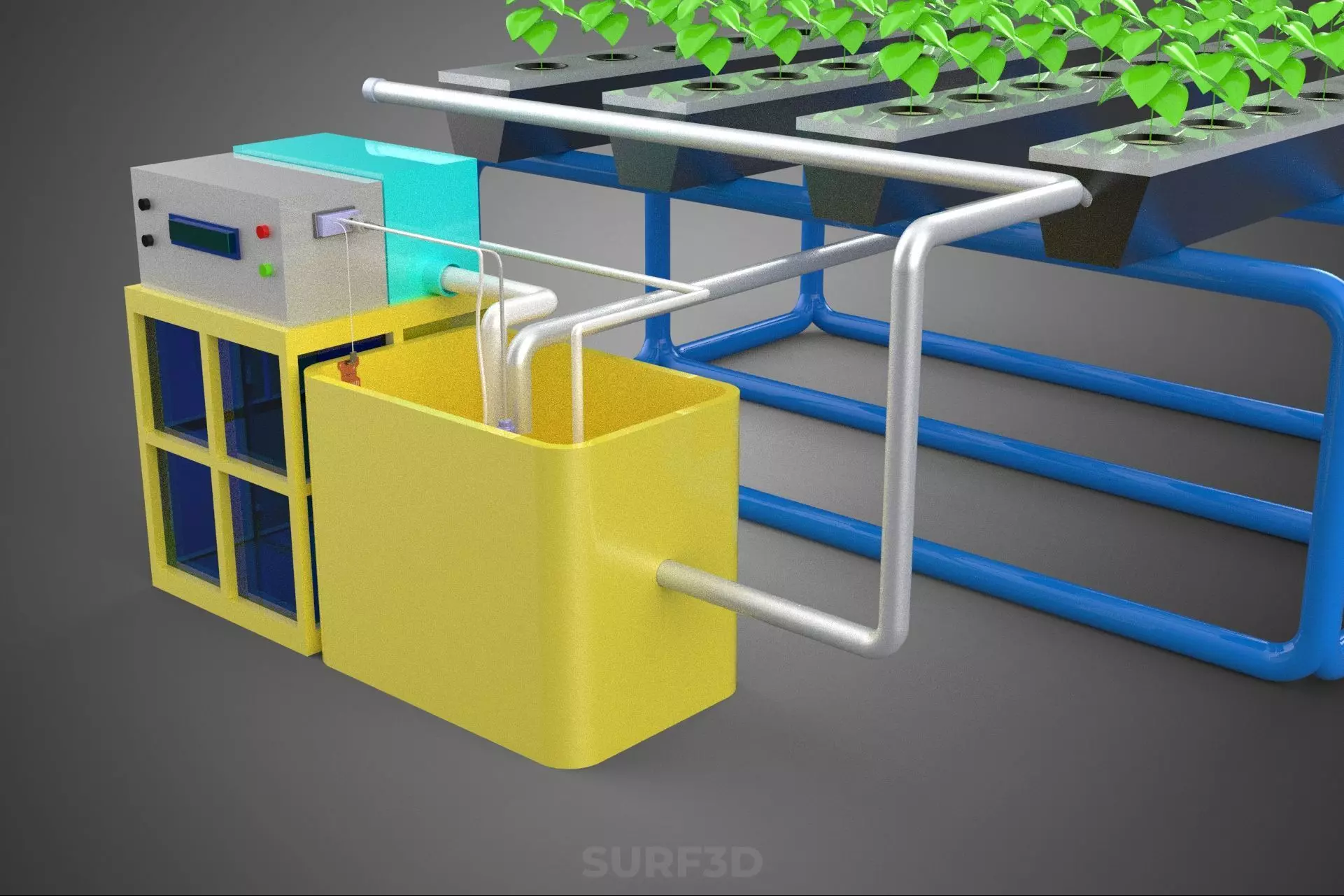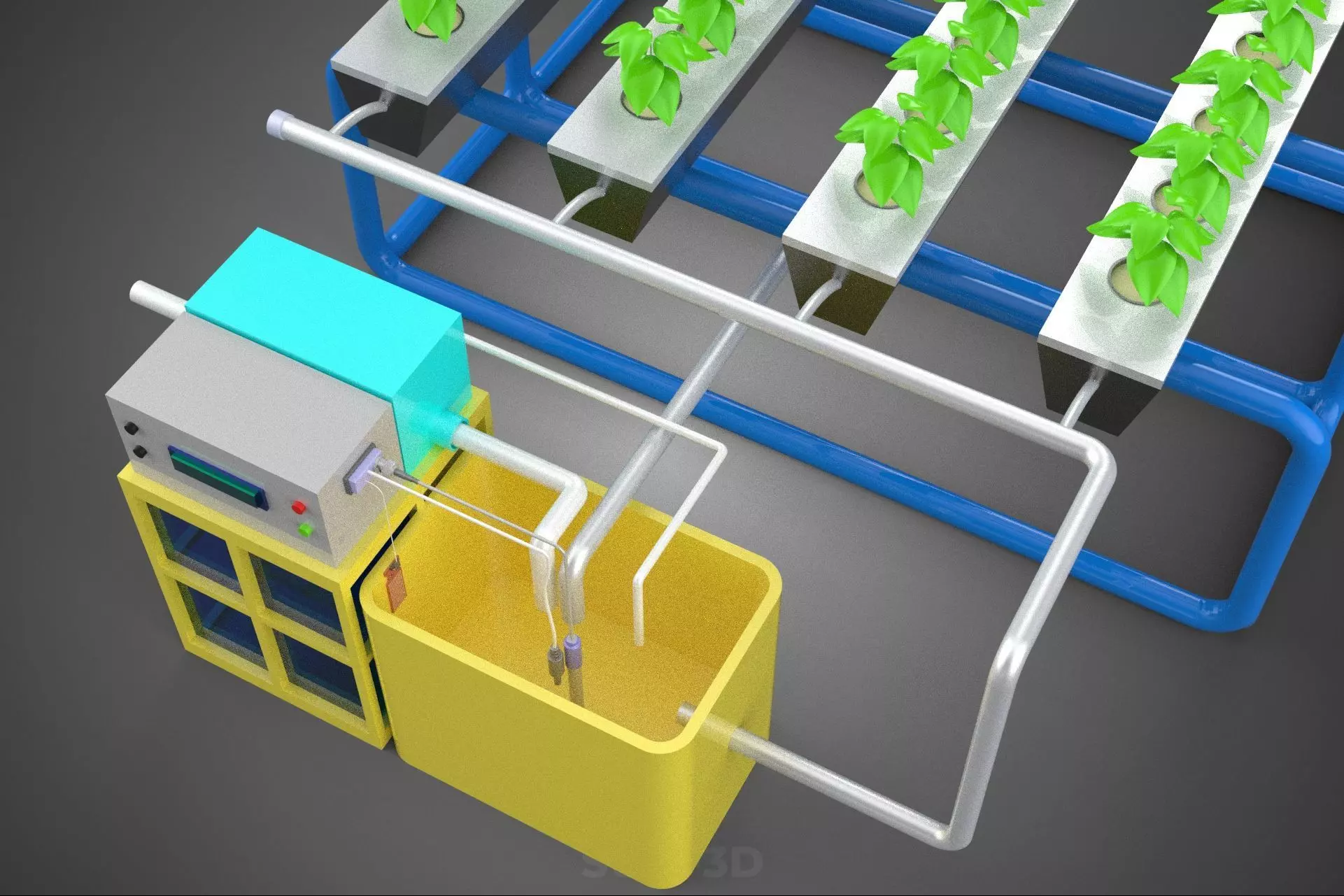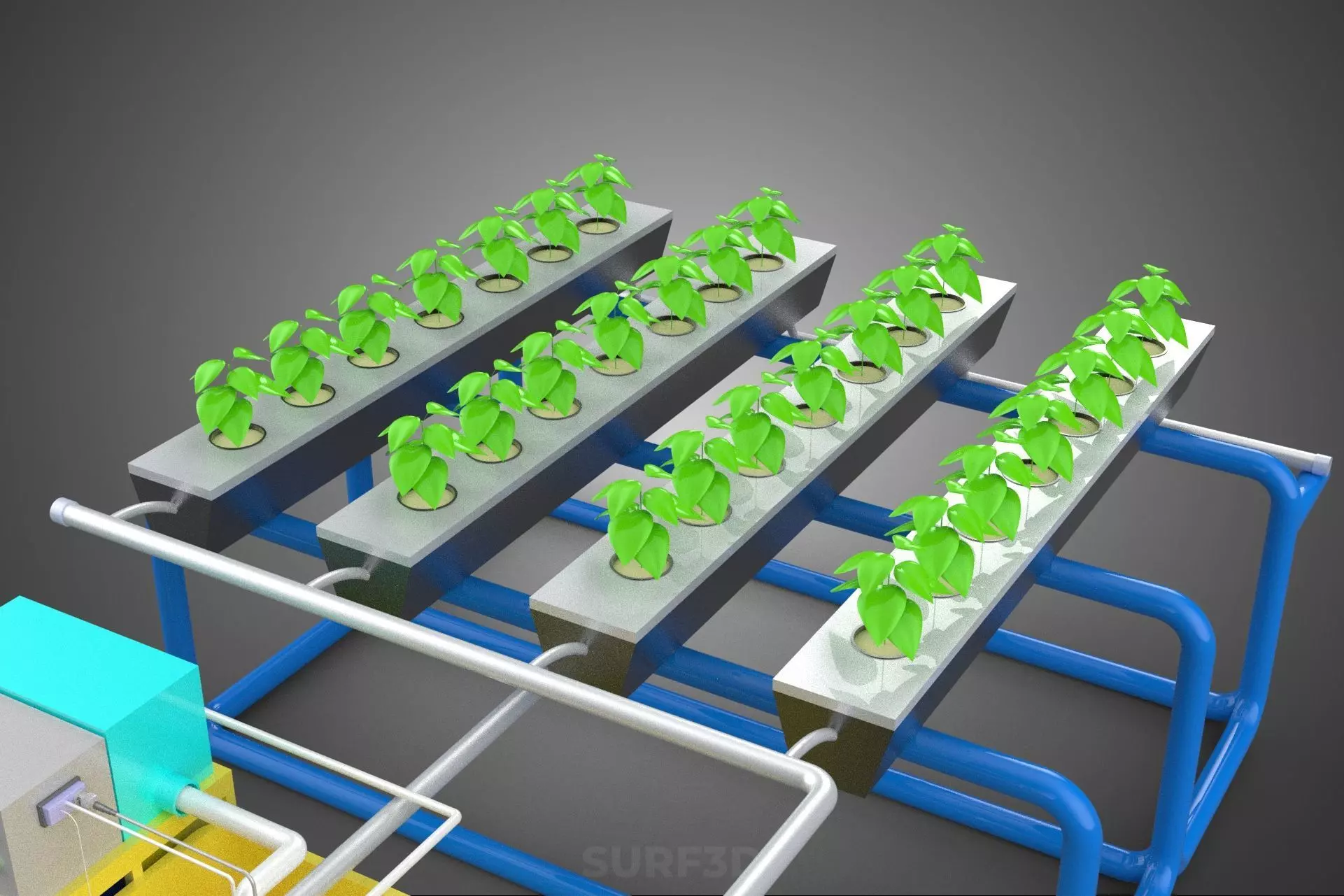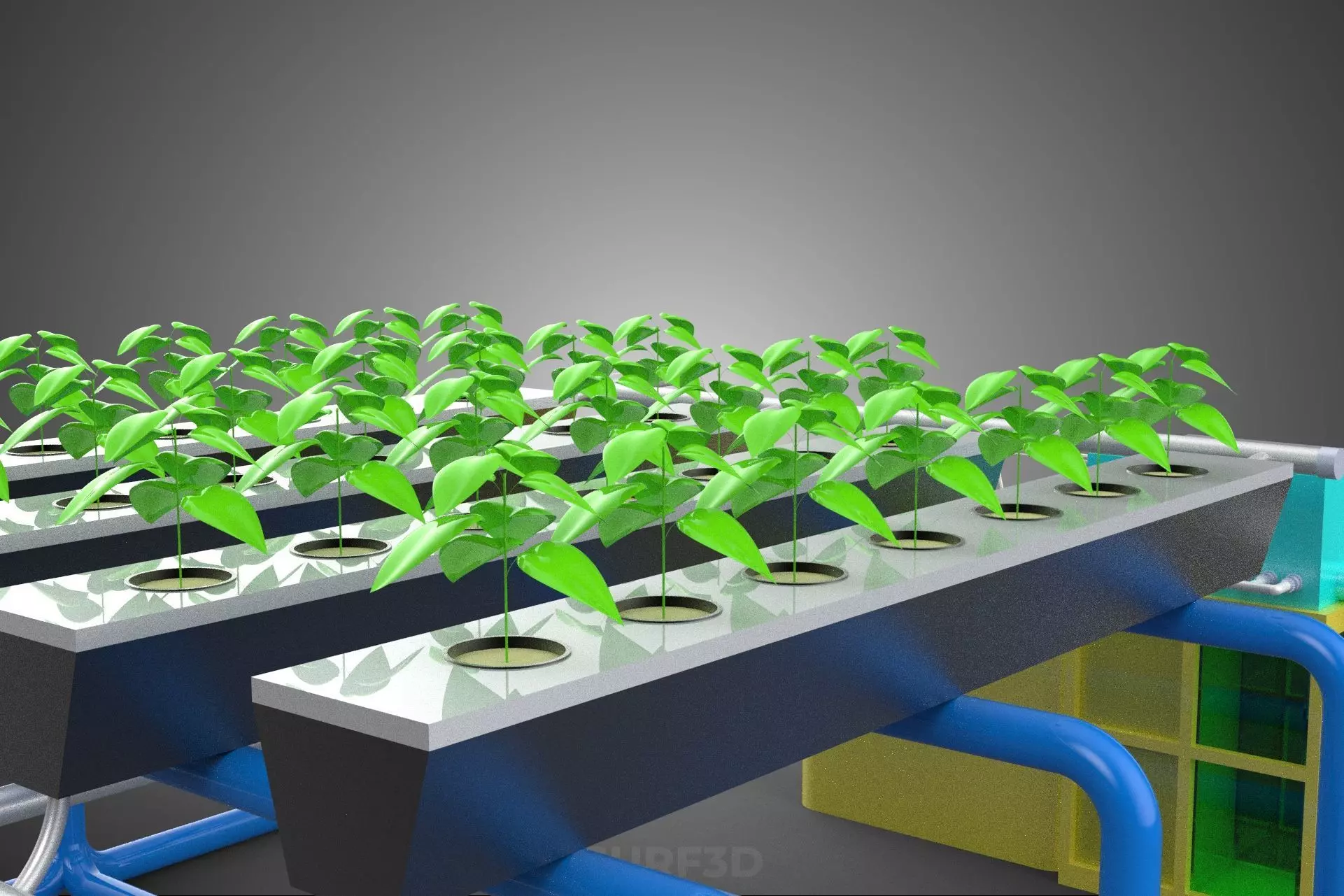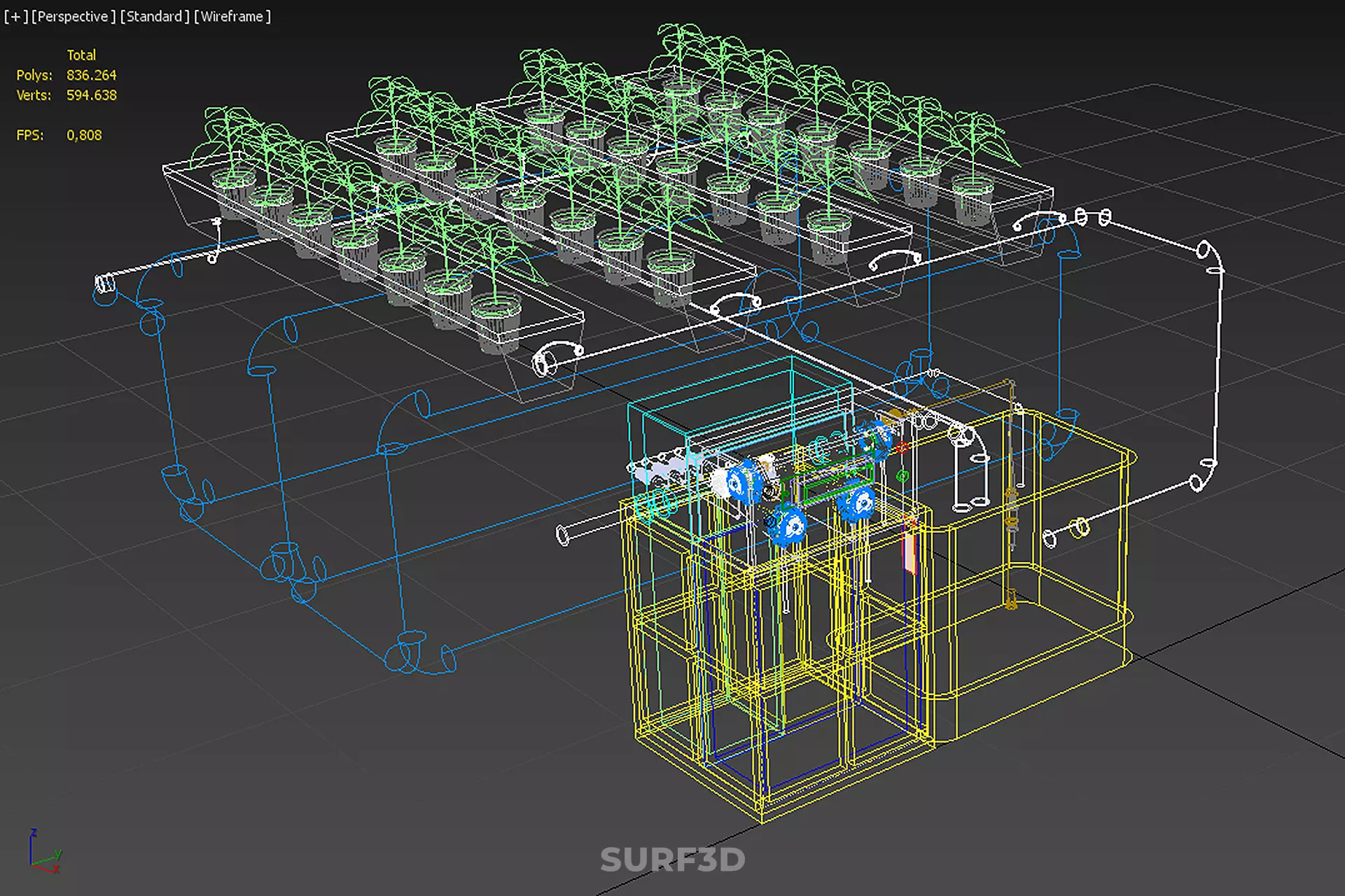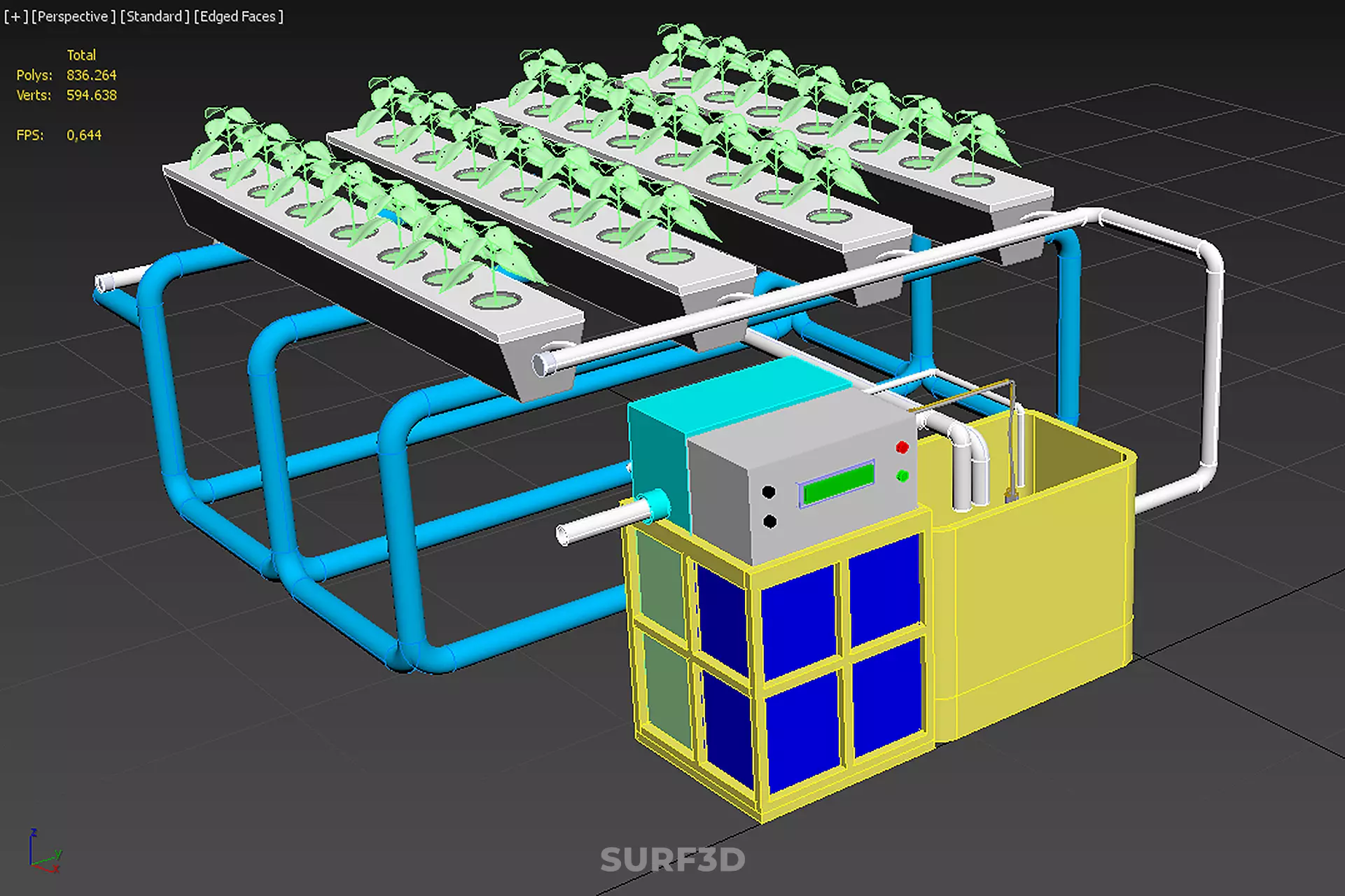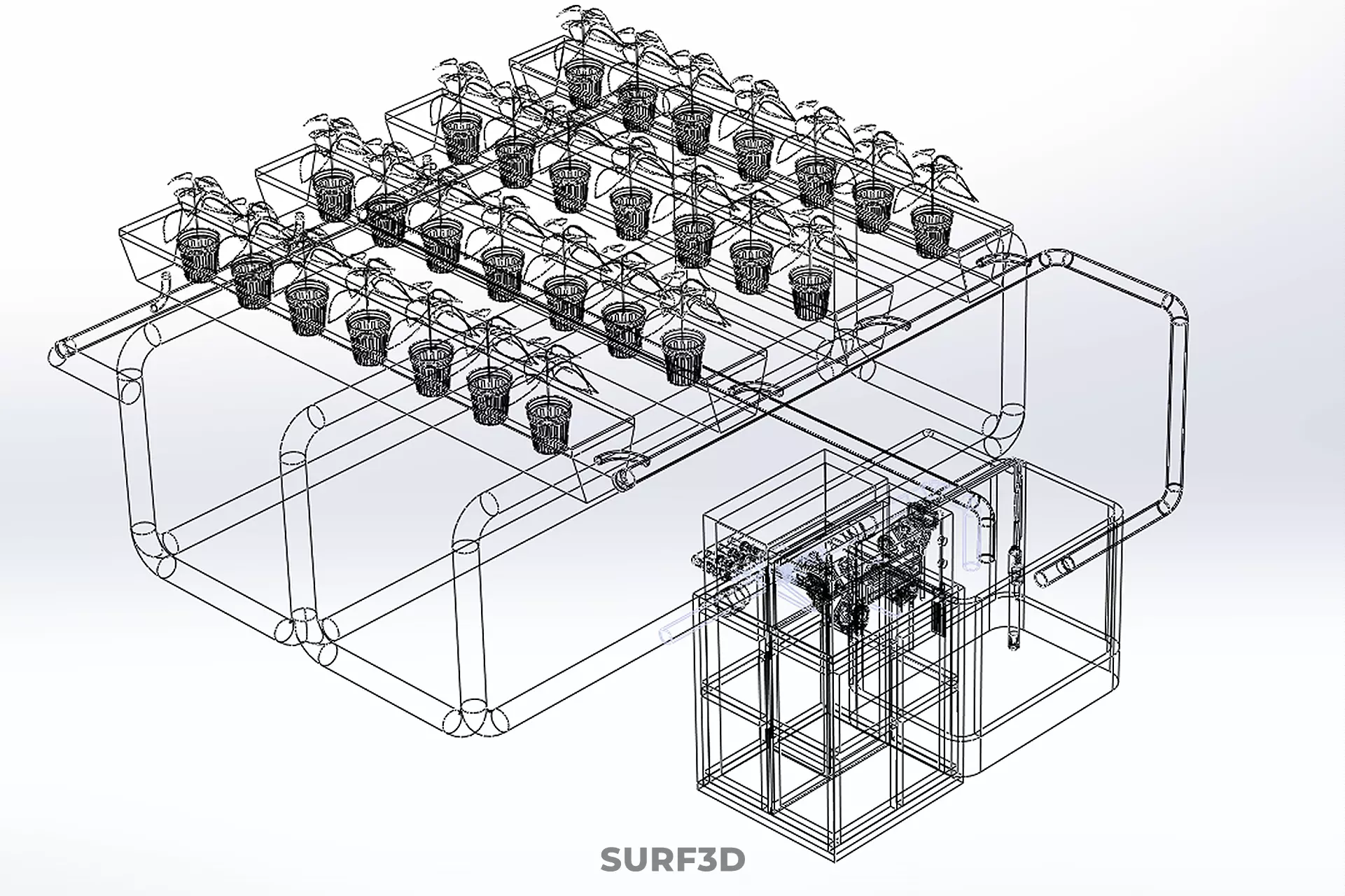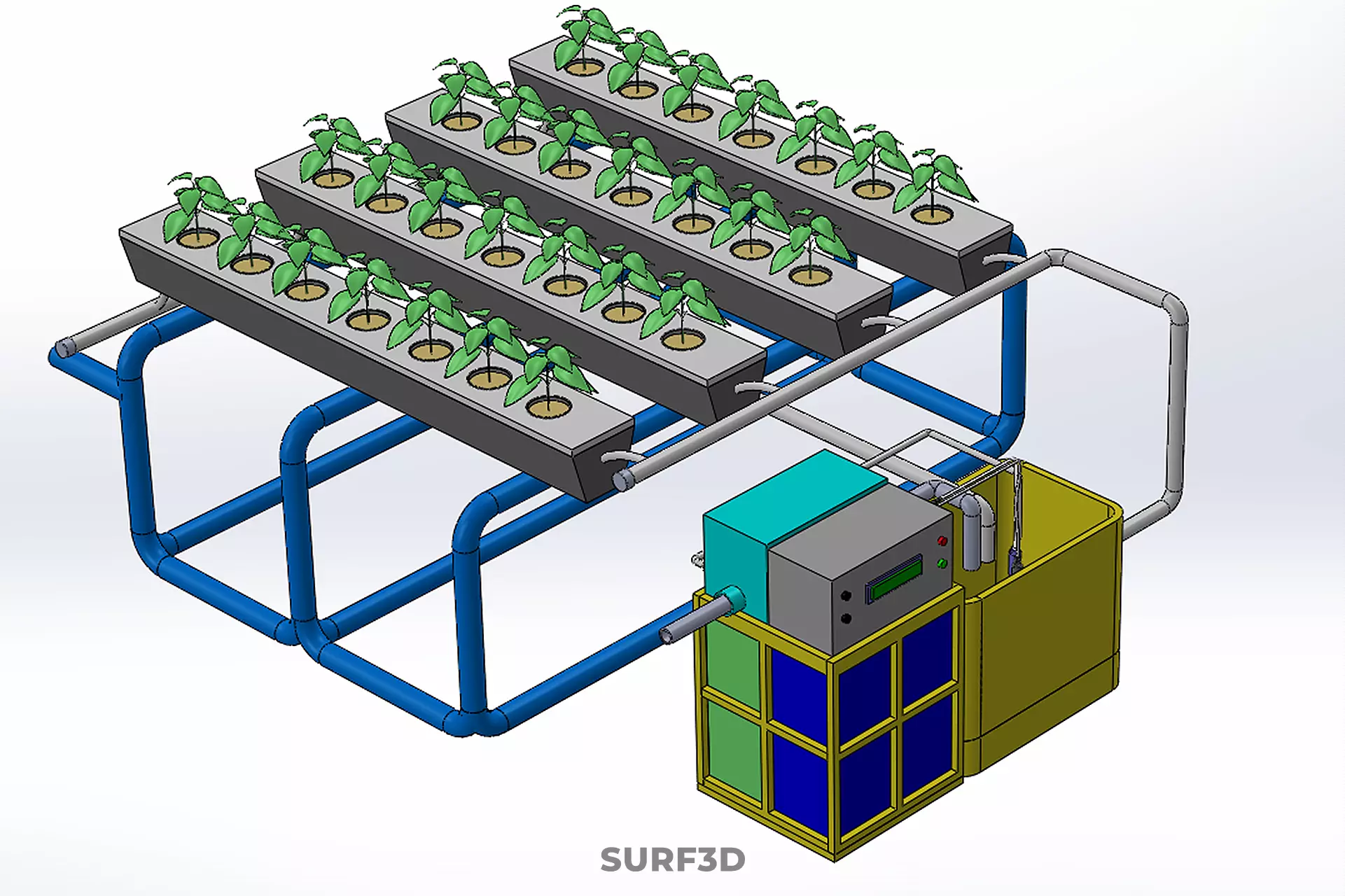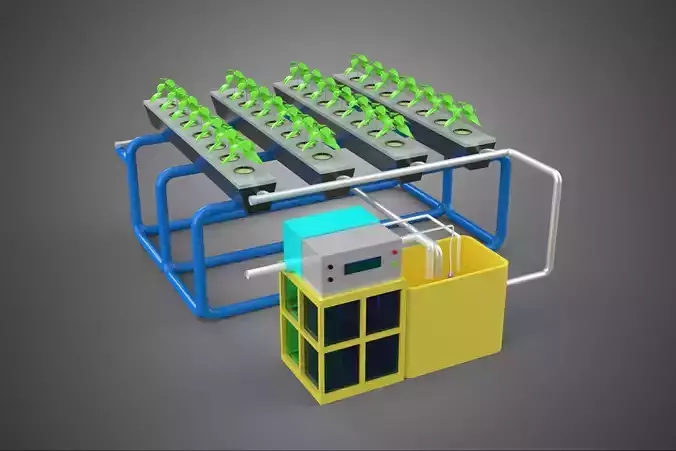
AUTO CONTROL MONITORING NUTRIENT PH NUTRITION HYDROPONIC PLANT 3D model
High-quality 3D assets at affordable prices — trusted by designers, engineers, and creators worldwide. Made with care to be versatile, accessible, and ready for your pipeline.
Included File Formats
This model is provided in 14 widely supported formats, ensuring maximum compatibility:
• - FBX (.fbx) – Standard format for most 3D software and pipelines
• - OBJ + MTL (.obj, .mtl) – Wavefront format, widely used and compatible
• - STL (.stl) – Exported mesh geometry; may be suitable for 3D printing with adjustments
• - STEP (.step, .stp) – CAD format using NURBS surfaces
• - IGES (.iges, .igs) – Common format for CAD/CAM and engineering workflows (NURBS)
• - SAT (.sat) – ACIS solid model format (NURBS)
• - DAE (.dae) – Collada format for 3D applications and animations
• - glTF (.glb) – Modern, lightweight format for web, AR, and real-time engines
• - 3DS (.3ds) – Legacy format with broad software support
• - 3ds Max (.max) – Provided for 3ds Max users
• - Blender (.blend) – Provided for Blender users
• - SketchUp (.skp) – Compatible with all SketchUp versions
• - AutoCAD (.dwg) – Suitable for technical and architectural workflows
• - Rhino (.3dm) – Provided for Rhino users
Model Info
• - All files are checked and tested for integrity and correct content
• - Geometry uses real-world scale; model resolution varies depending on the product (high or low poly)
• • - Scene setup and mesh structure may vary depending on model complexity
• - Rendered using Luxion KeyShot
• - Affordable price with professional detailing
Buy with confidence. Quality and compatibility guaranteed.
If you have any questions about the file formats, feel free to send us a message — we're happy to assist you!
Sincerely,
SURF3D
Trusted source for professional and affordable 3D models.
More Information About 3D Model :
Automated Control and Monitoring Systems for Hydroponic Nutrient pH and Plant Nutrition
An automated control and monitoring system for hydroponic nutrient pH and plant nutrition represents a sophisticated technological integration designed to optimize plant growth in soilless cultivation environments. This system addresses the critical requirement for precise management of the nutrient solution, a liquid medium supplying essential mineral elements directly to plant roots. In hydroponics, the composition, concentration, and particularly the pH of this solution are paramount determinants of nutrient availability and uptake efficiency, directly influencing plant health, growth rates, and final yield.
Hydroponic Nutrient Management Fundamentals
Hydroponic systems eliminate soil, requiring a meticulously formulated aqueous solution to deliver all necessary macronutrients (e.g., nitrogen, phosphorus, potassium, calcium, magnesium, sulfur) and micronutrients (e.g., iron, manganese, zinc, copper, boron, molybdenum, chlorine). The efficacy of nutrient delivery is highly dependent on two primary parameters: Electrical Conductivity (EC), which indicates the total concentration of dissolved salts (and thus nutrients), and pH, which measures the acidity or alkalinity of the solution. Both parameters must be maintained within specific, narrow ranges tailored to the particular plant species and its developmental stage.
The Critical Role of pH
The pH of the nutrient solution is arguably the most critical factor influencing nutrient availability. Plant roots can only absorb nutrients when they are in specific ionic forms, and the solubility and ionic form of these elements are highly sensitive to pH fluctuations. For most hydroponically grown plants, an optimal pH range typically falls between 5.5 and 6.5. Outside this range, essential nutrients can precipitate out of solution, becoming unavailable for uptake (e.g., iron deficiency at high pH, phosphorus lock-up at very low pH), or certain elements can become overly available, leading to toxicity. Maintaining a stable, optimal pH directly enhances nutrient assimilation, prevents deficiencies and toxicities, and promotes vigorous plant development.
Monitoring Systems
Manual monitoring of nutrient solution parameters in hydroponic operations is labor-intensive, prone to human error, and often results in reactive adjustments rather than proactive maintenance. Automated monitoring systems utilize specialized sensors to continuously or periodically measure key parameters. High-precision pH probes (glass electrodes), EC sensors (conductimetric cells), and often temperature sensors are submerged within the nutrient reservoir or recirculating solution. These sensors transmit real-time data to a central controller. This data can also be logged for historical analysis, trend identification, and system diagnostics.
Automated Control Mechanisms
The auto control component transforms a monitoring system into a dynamic, adaptive management tool. Based on the real-time sensor data, the intelligent controller initiates corrective actions without human intervention. For pH regulation, if the measured pH deviates from the user-defined setpoint, the controller activates peristaltic dosing pumps to inject precise amounts of pH-adjusting solutions (typically an acid like phosphoric acid for lowering pH or a base like potassium hydroxide for raising pH) into the nutrient reservoir. Similarly, for nutrient concentration, if the EC falls below the setpoint, the system can add concentrated nutrient solutions. This creates a closed-loop feedback system where parameters are continuously measured, compared to targets, and adjusted accordingly.
Components of an Automated System
A typical automated nutrient management system includes:
- Sensors: pH probe, EC sensor, temperature sensor.
- Controller Unit: A microprocessor-based device that receives sensor inputs, processes data, applies control logic, and outputs commands.
- Dosing Pumps: Peristaltic or diaphragm pumps used for precise, volumetric delivery of pH adjusters and concentrated nutrient solutions.
- Solution Reservoirs: Separate containers for pH up, pH down, and concentrated A and B nutrient solutions.
- Data Interface: A display, perhaps with network connectivity (Wi-Fi, Ethernet), allowing users to monitor parameters, adjust setpoints, and access historical data, often via a web interface or mobile application.
- Agitation System: Often integrated to ensure thorough mixing of added solutions.
Advantages of Automation
The implementation of automated nutrient pH and nutrition control systems offers substantial benefits:
- Enhanced Plant Health and Yield: Consistent, optimal conditions lead to healthier plants, faster growth, and increased productivity.
- Reduced Labor Costs: Eliminates the need for manual testing and adjustment.
- Precision and Consistency: Maintains parameters within tighter tolerances than manual methods, minimizing fluctuations that stress plants.
- Resource Efficiency: Prevents nutrient waste from over-dosing and optimizes water usage by reducing the need for reservoir dumping due to imbalanced solutions.
- Early Problem Detection: Continuous monitoring can alert growers to sensor malfunctions or rapid parameter shifts indicating system issues.
- Scalability: Facilitates the management of larger hydroponic operations with greater ease and reliability.
- Data-Driven Optimization: Provides valuable data for analyzing growth patterns, identifying optimal nutrient recipes, and refining cultivation strategies.
Challenges and Considerations
While highly beneficial, these systems require careful setup and maintenance. Sensor calibration is crucial for accuracy and must be performed regularly. Sensors have a finite lifespan and require eventual replacement. Initial investment costs can be higher than manual systems.

